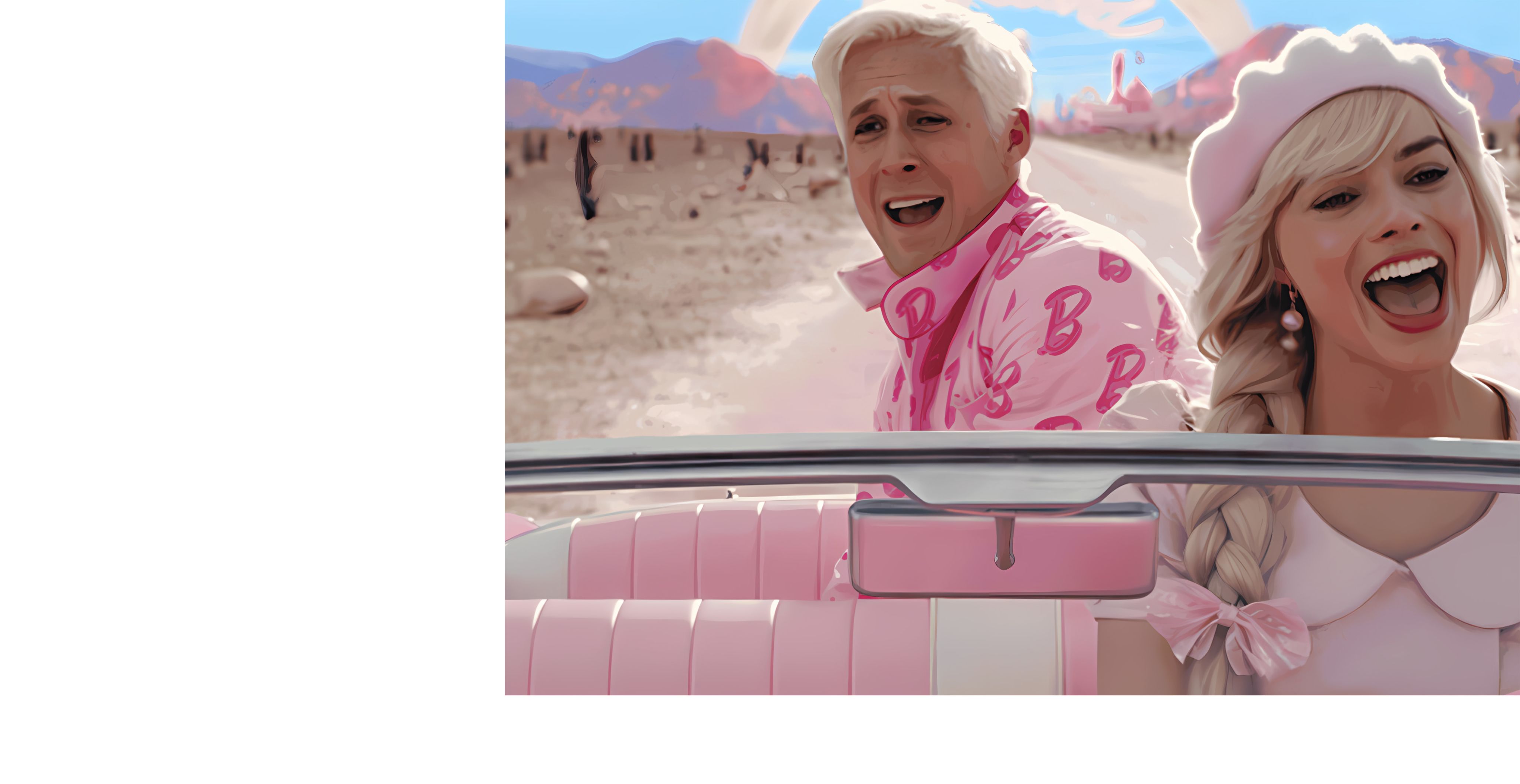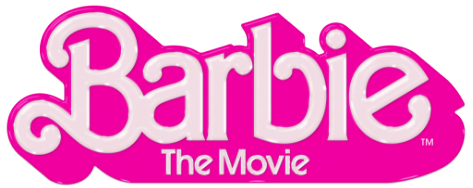
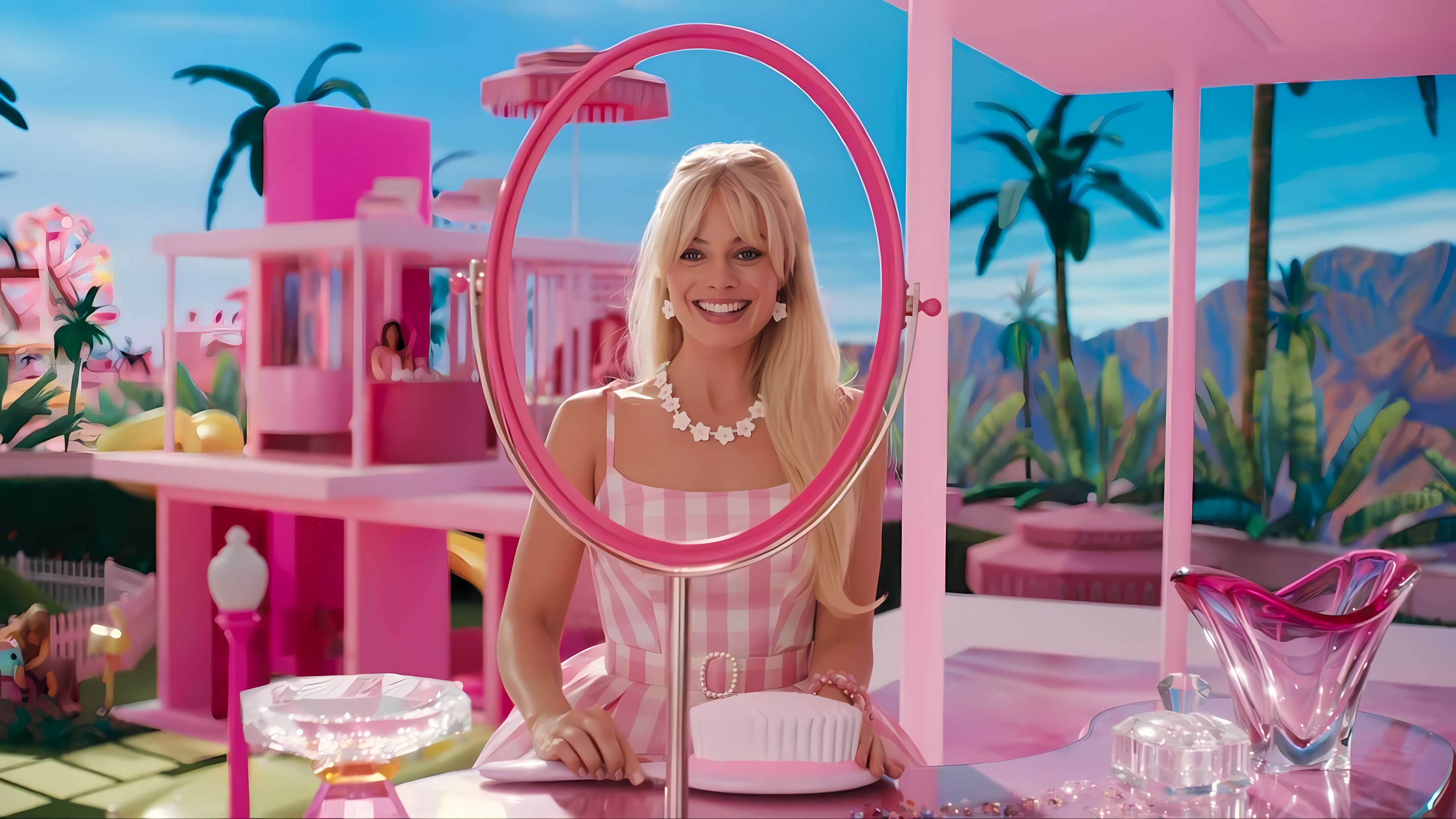
It is literally impossible to be a woman.
When Gloria made that claim in Barbie: The Movie, women all over the world cheered in affirmation. Her passionate speech about what it means to be a woman and the contradictory standards for appearance and behavior made some Kens of the world - and many brands of the world - take notice. Take a look at how the sometimes-controversial doll has shifted from portraying unhealthy stereotypes about women to empowering positive narratives, and how brands have stepped up in alignment with these narratives.
The release of the “Barbie” movie on July 21, 2023, put Mattel in an ambitious cinematic venture, with a fresh look at the iconic doll with a compelling storyline, brand partnerships, and modern shades of pink themes that resonate with the current audiences (Miller, 2023).
Mattel & the Barbie doll
Mattel company, famous for creating the iconic Barbie doll, has faced some challenges since the 2020s due to a competitive market. The release of the “Barbie” movie had the goal to impact Mattel’s performance in the toy’s market (Miller, 2023).
Mattel’s struggles
Mattel is a globally recognized toy company that has been in the market since 1945. The company earned prominence with innovative and creative toys. In the early 2020s, Mattel experienced various setbacks that impacted its financial performance and stock value. For instance, with the rise of digital toys and entertainment options, traditional toy manufacturers faced strong competition. Children’s play patterns shifted toward online gaming and virtual experiences. This is the main factor that affected Mattel’s revenues. Additionally, the company faced issues with supply chain disruptions and rising production costs due to the COVID-19 pandemic. These challenges resulted in a decline in Mattel’s stock performance, raising concerns about the company’s future in the market (Miller, 2023).
After the movie’s release, Mattel experienced a significant increase in its stock value. Investors reacted positively to the success of the film, which changed the prospects of the company. Not only did stock value rise, but the brand’s profitability, value of the doll, and value of the company in the market increased (Graser, 2023; Miller, 2023).
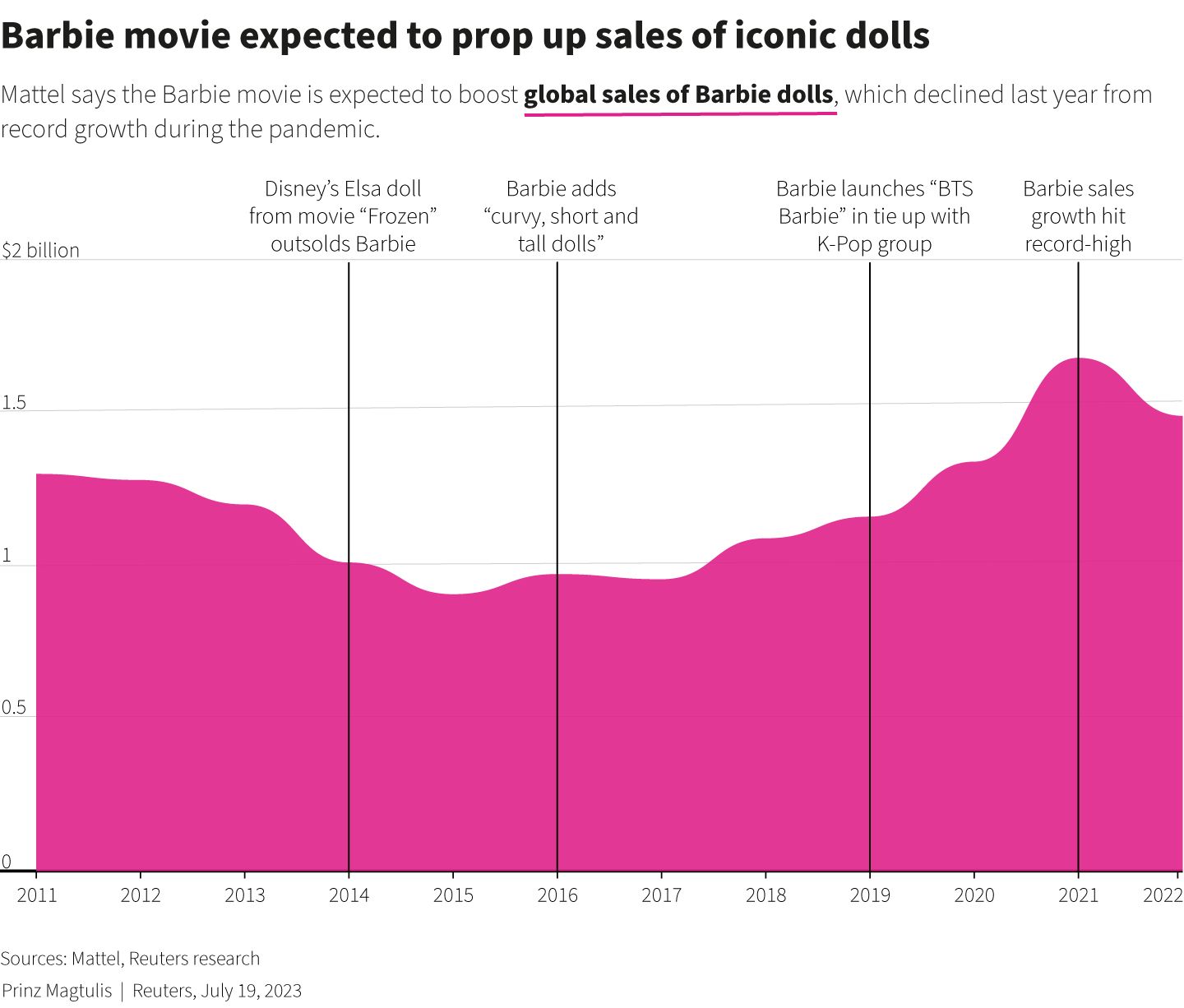
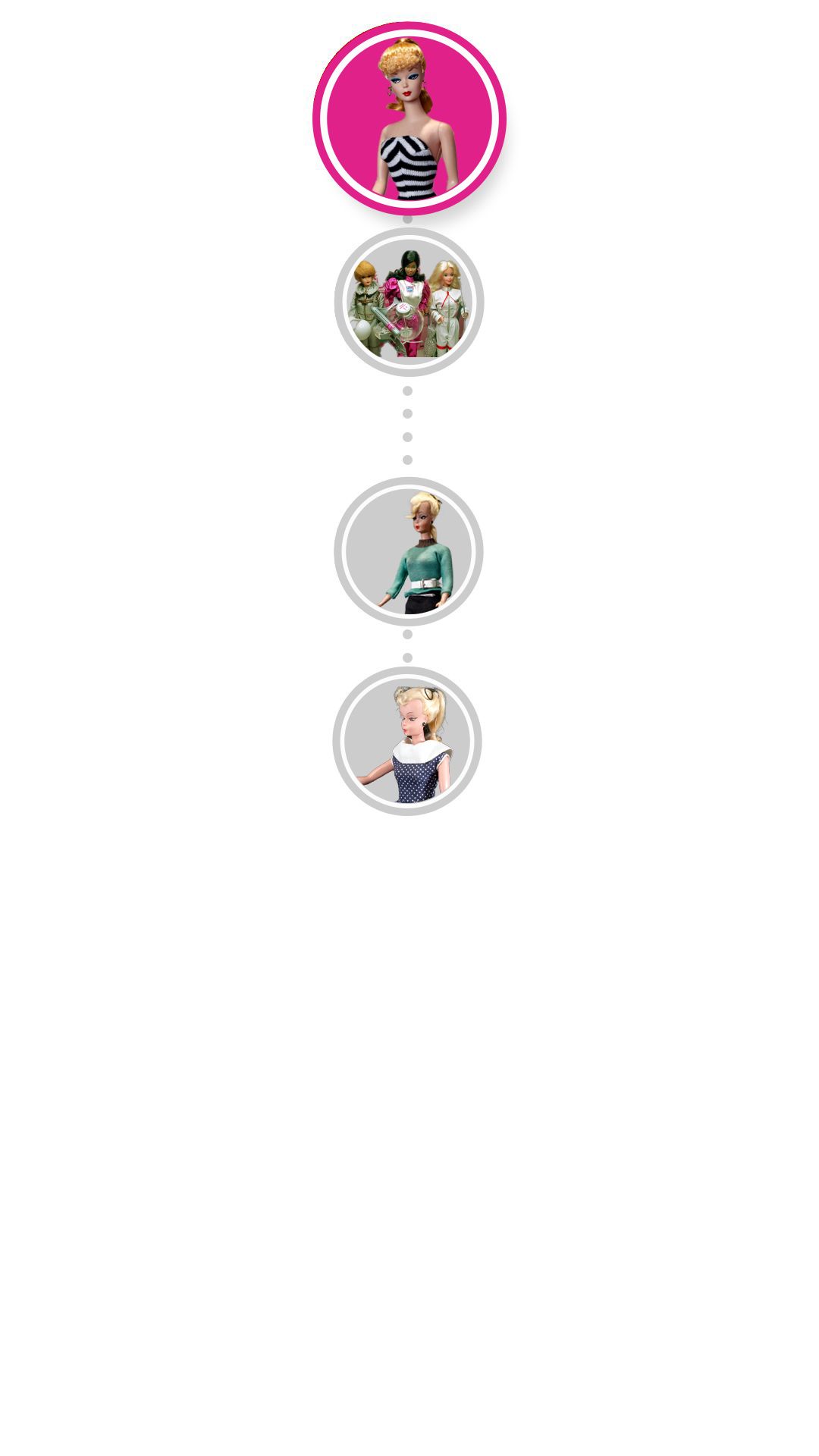
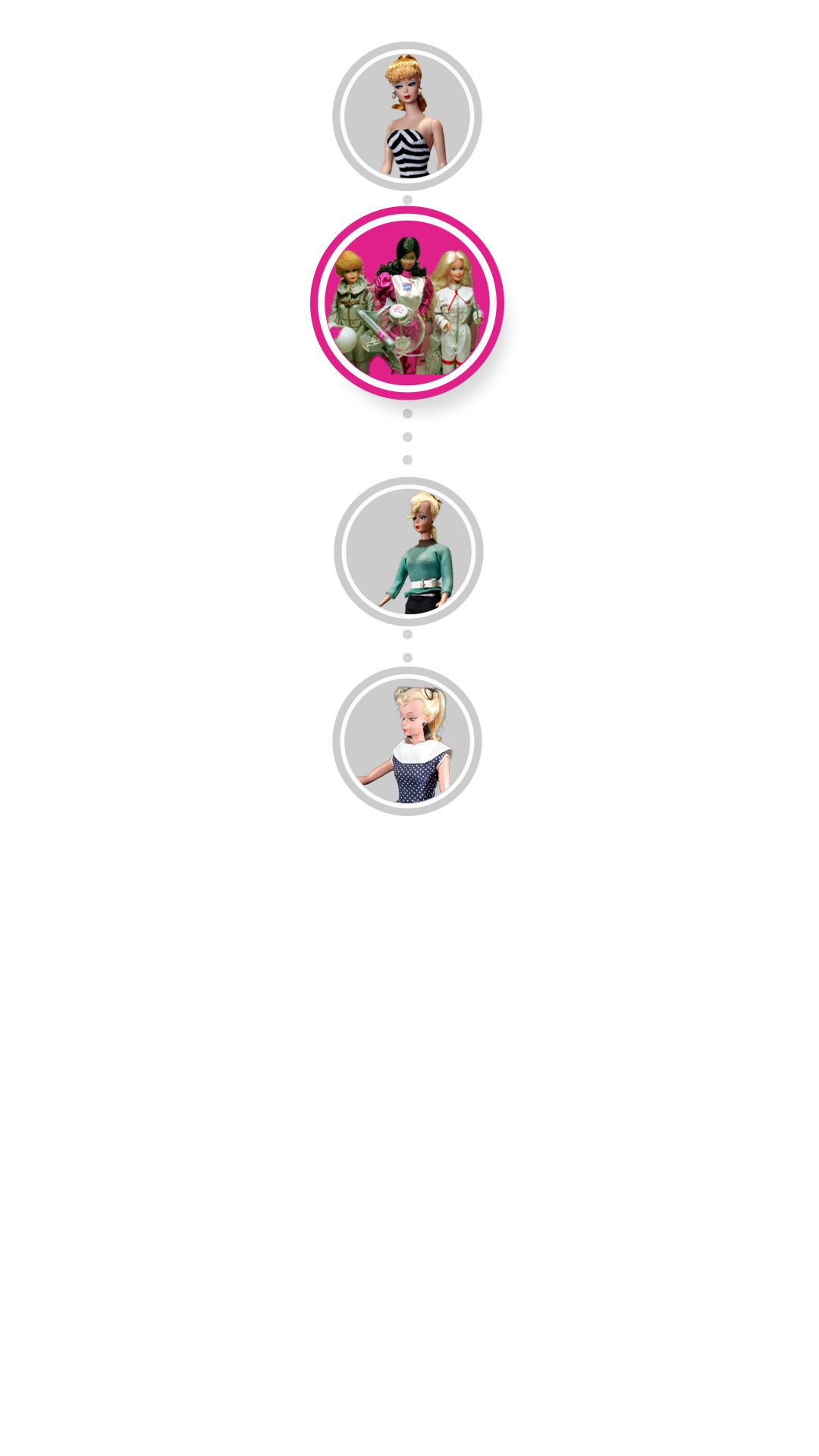
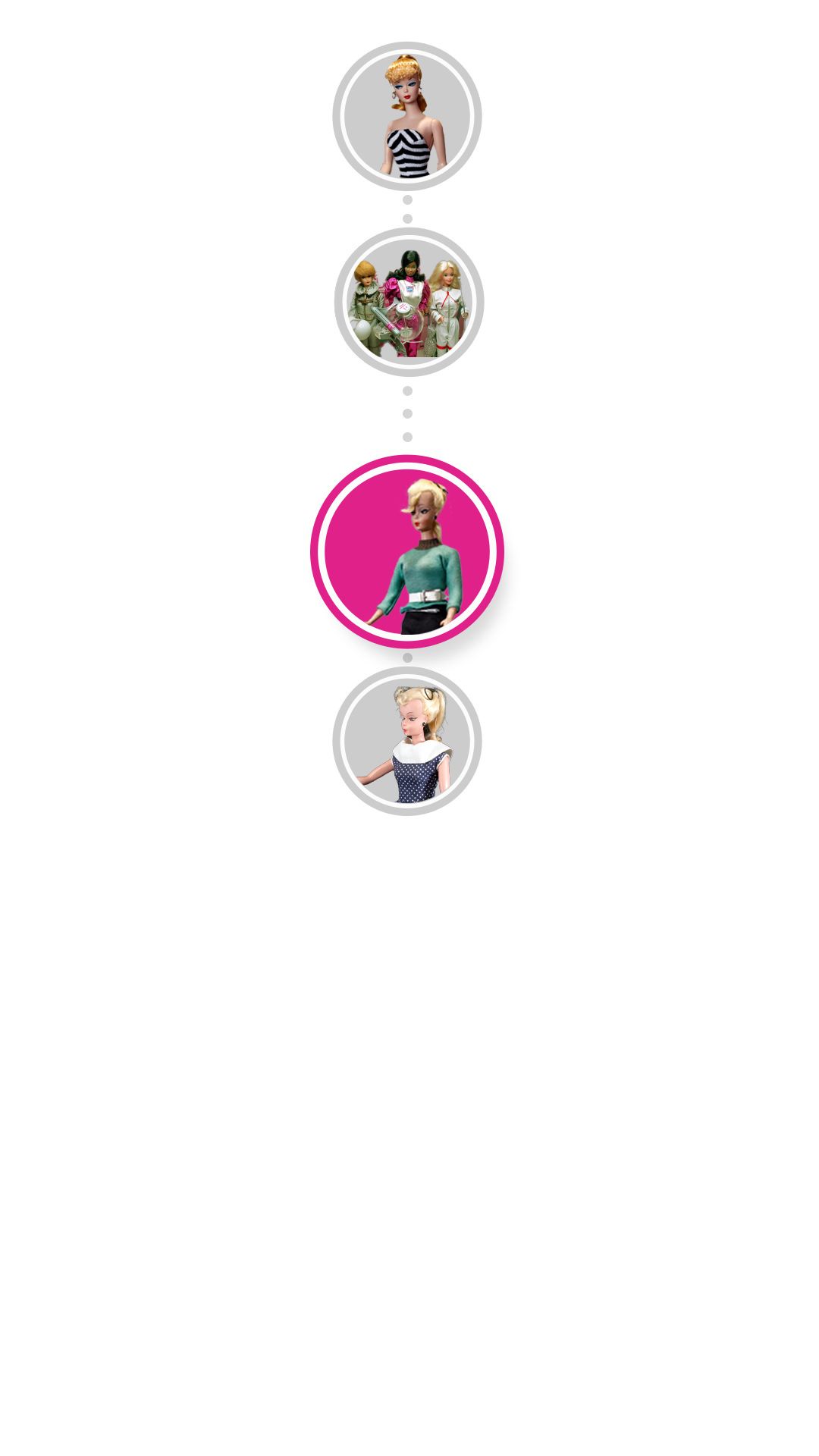

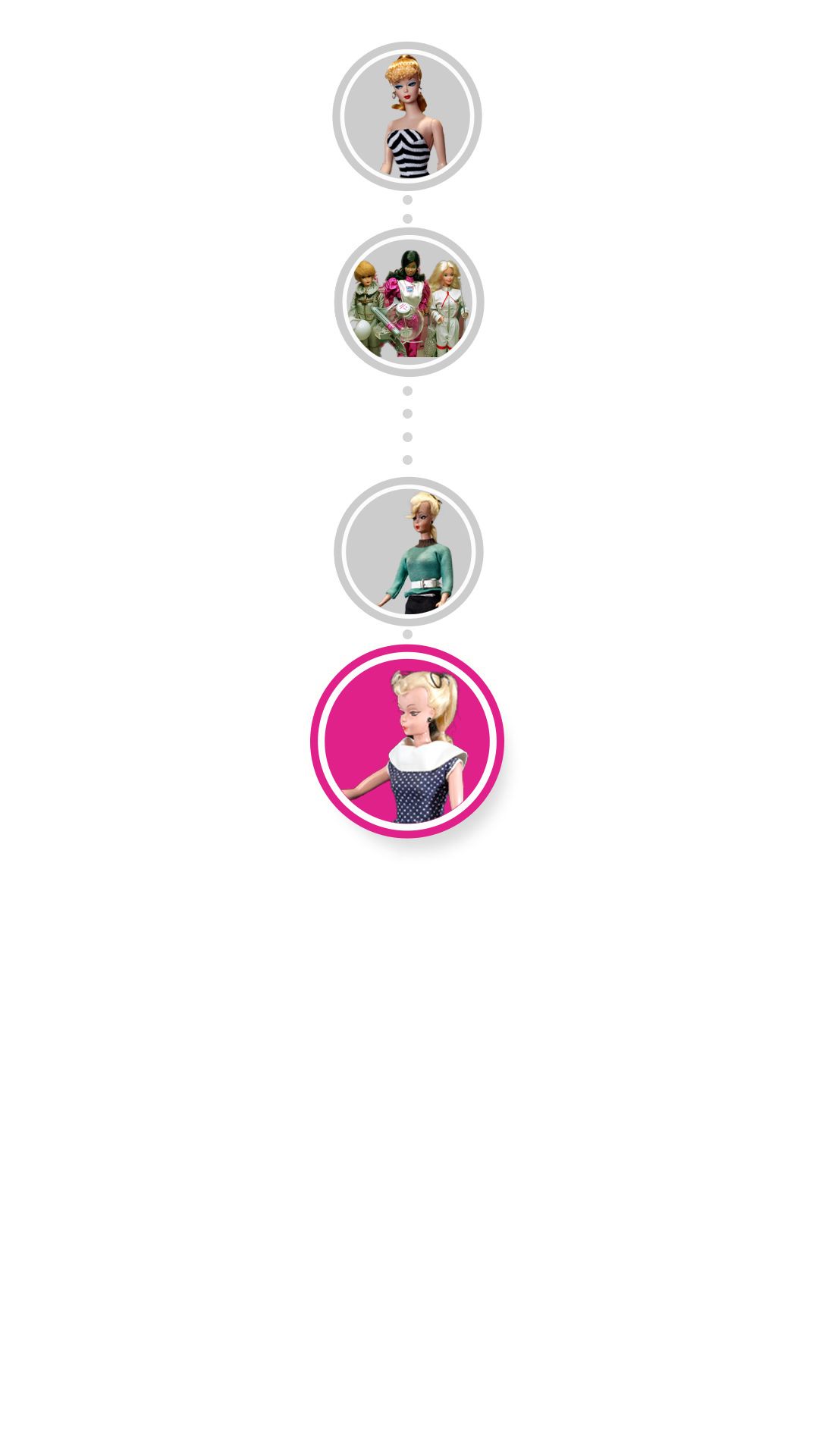

1950s
The iconic doll has its roots in a similar-looking German doll. Barbie likely would not exist if Mattel’s co-founder (Ruth Handler) had not come across the doll in a toy store window during a vacation to the Swiss Alps in the 1950s, after years of trying to convince her male colleagues of the appeal of a fashionable adult doll, as Handler wrote in her 1994 autobiography “Dream doll.”
“Oh, sure, there were so-called fashion dolls… But these dolls had flat chests, big bellies, and squatty legs – they were built like overweight six- or eight-year-olds,” as Handler wrote.

She wanted a doll for girls who were too old for baby dolls and that could inspire her own daughter, Barbara, as the toys that inspired her son to imagine himself as a firefighter or astronaut. However, Mattel’s team did not believe the doll would be profitable (Dean, 2023).

1955
Bild Lilli, which inspired the creation of Barbie, had first been shown in comic strips in German tabloid paper Bild Zeitung in 1952. Lilli, a secretary created by cartoonist Reinhard Beuthein, was confident, witty, and flirty. “Lilli pursued rich men by striking provocative poses in revealing clothes and spouting comic-strip bubbles of suggestive dialogue… she was naïve and clever at the same time,” according to Robin Gerber in “Barbie and Ruth,” her 2000 biography of Handler (Dean, 2023).
The newspaper began making Lilli dolls in 1955 due to the comic’s popularity. The doll had a heart-shaped face, a glued-on high blonde ponytail, a sharp red pout, and eyes that glanced sideways, a blue shadow and winged liner, red nails, and painted earrings. She came in two sizes: 7.5 and 11.4 inches and was marketed to adults, who purchased her as a joke gift. “Lilli dolls could be bought in tobacco shops, bars, and adult-themed toy shops… Men got Lilli dolls as gag gifts at bachelor parties, put them on their car dashboard, dangled them from the rearview mirror, or gave them to girlfriends as suggestive keepsakes, according to Robin Gerber (Dean, 2023).

1964
When Handler returned from Switzerland to Los Angeles, she showed Lilli to Mattel’s team and convinced them about the market for such doll. Lilli’s look was tweaked (i.e., her curved eyebrows were swapped for dramatic arches, her lips were softened, she received tiny individual toes, Lilli’s hard plastic was switched for a softer material, and Barbie’s hair was rooted). Legal battles regarding royalties, patent, and copyright followed through the years, as Mattel never offered Greiner & Hausser royalties or received permission to use Lilli’s design. In 1964, Mattel bought Greiner & Hausser’s (G&H) Bild Lilli copyrights and patent rights. In 2000, G&H filed a lawsuit accusing Mattel of fraud related to the 1964 agreements. However, the court dismissed the lawsuit (Dean, 2023).
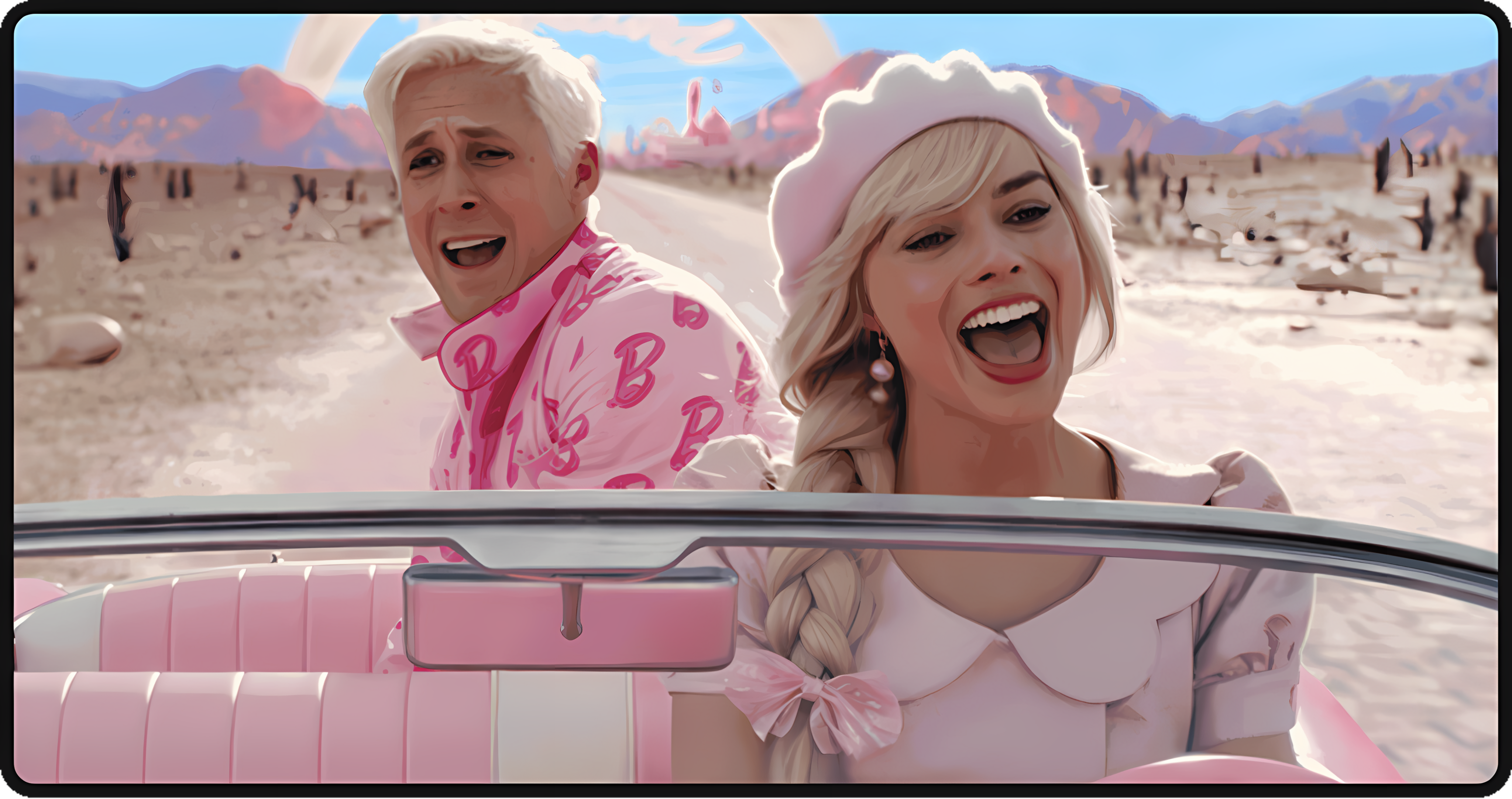
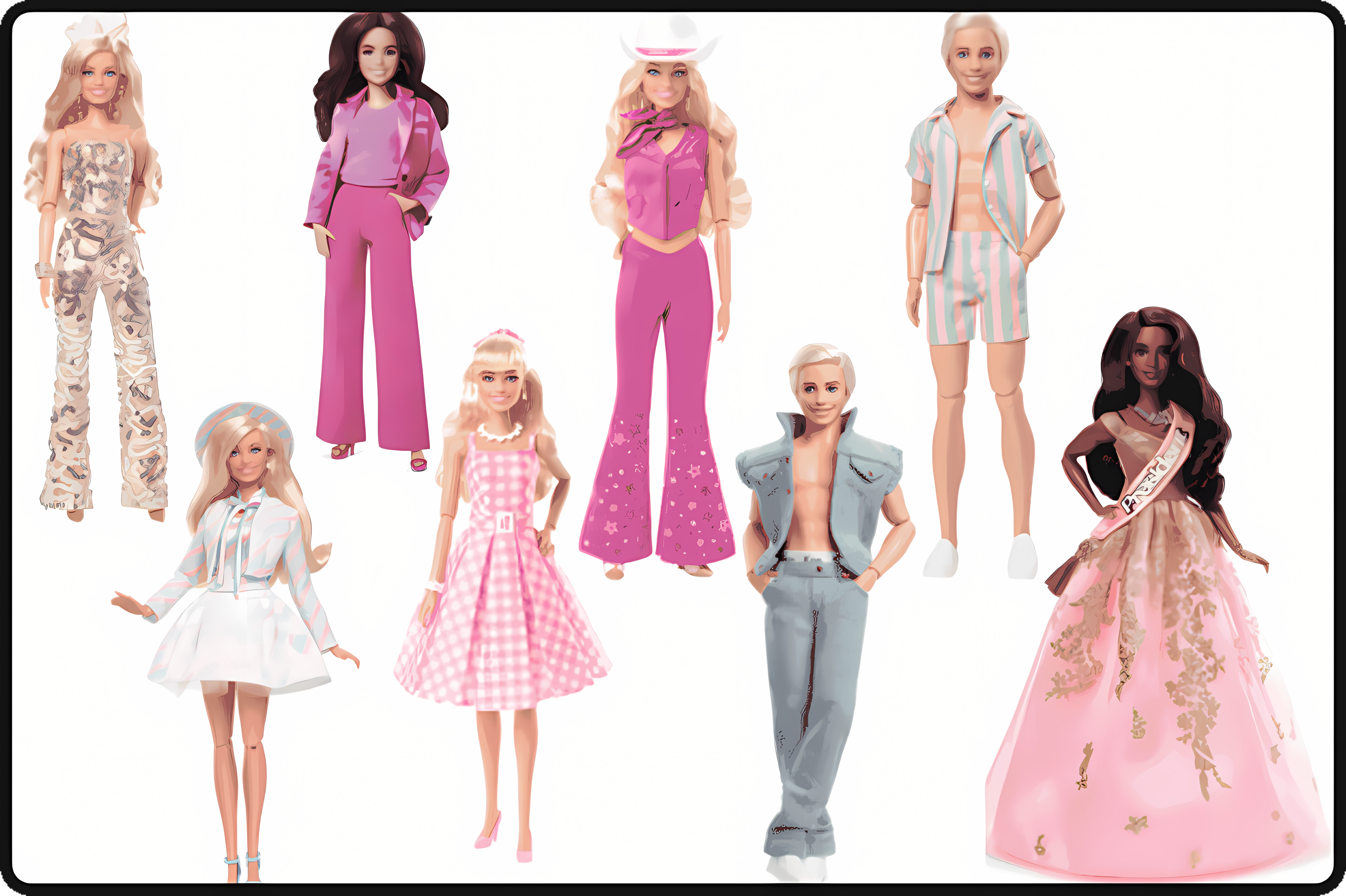
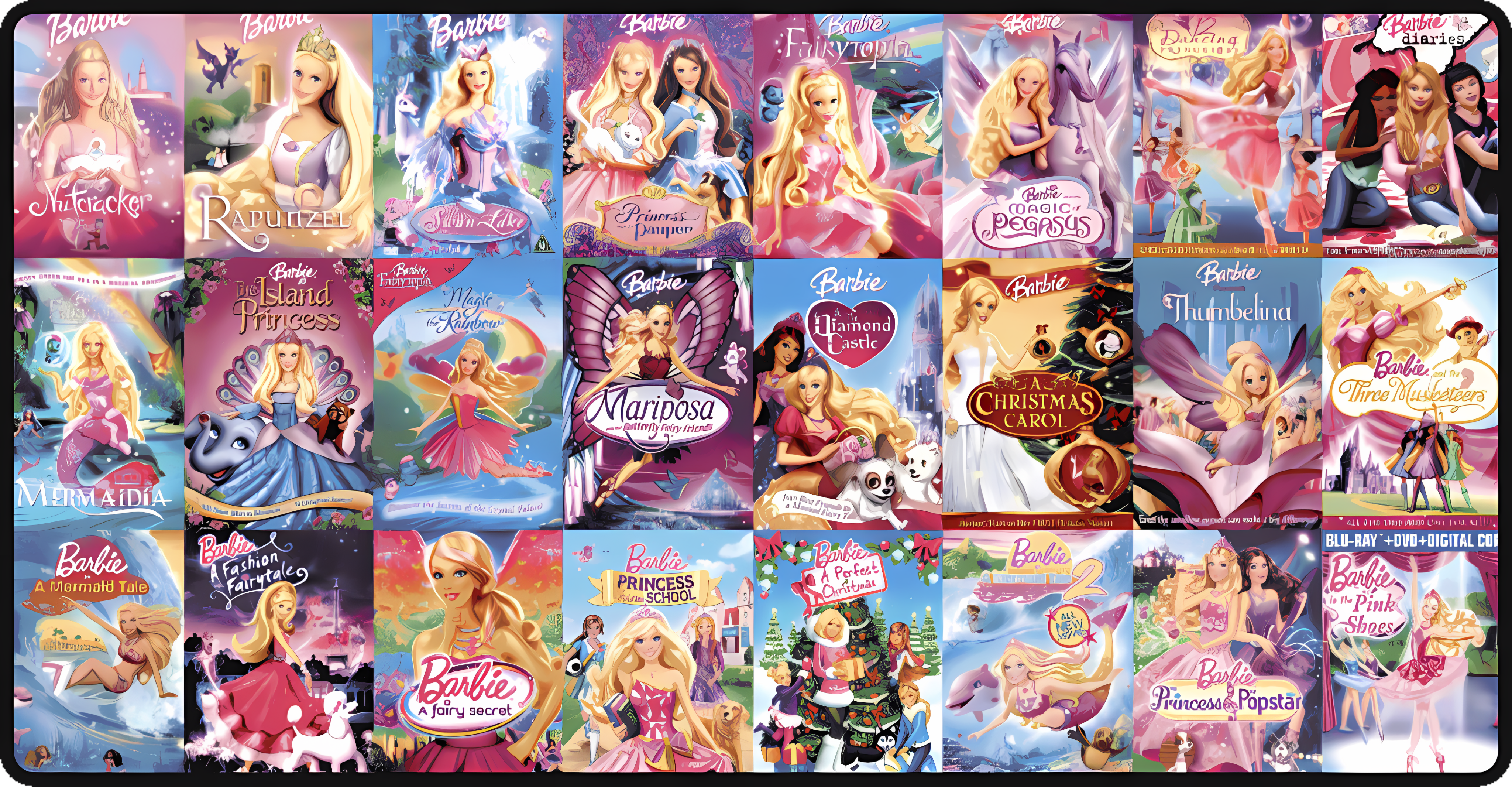
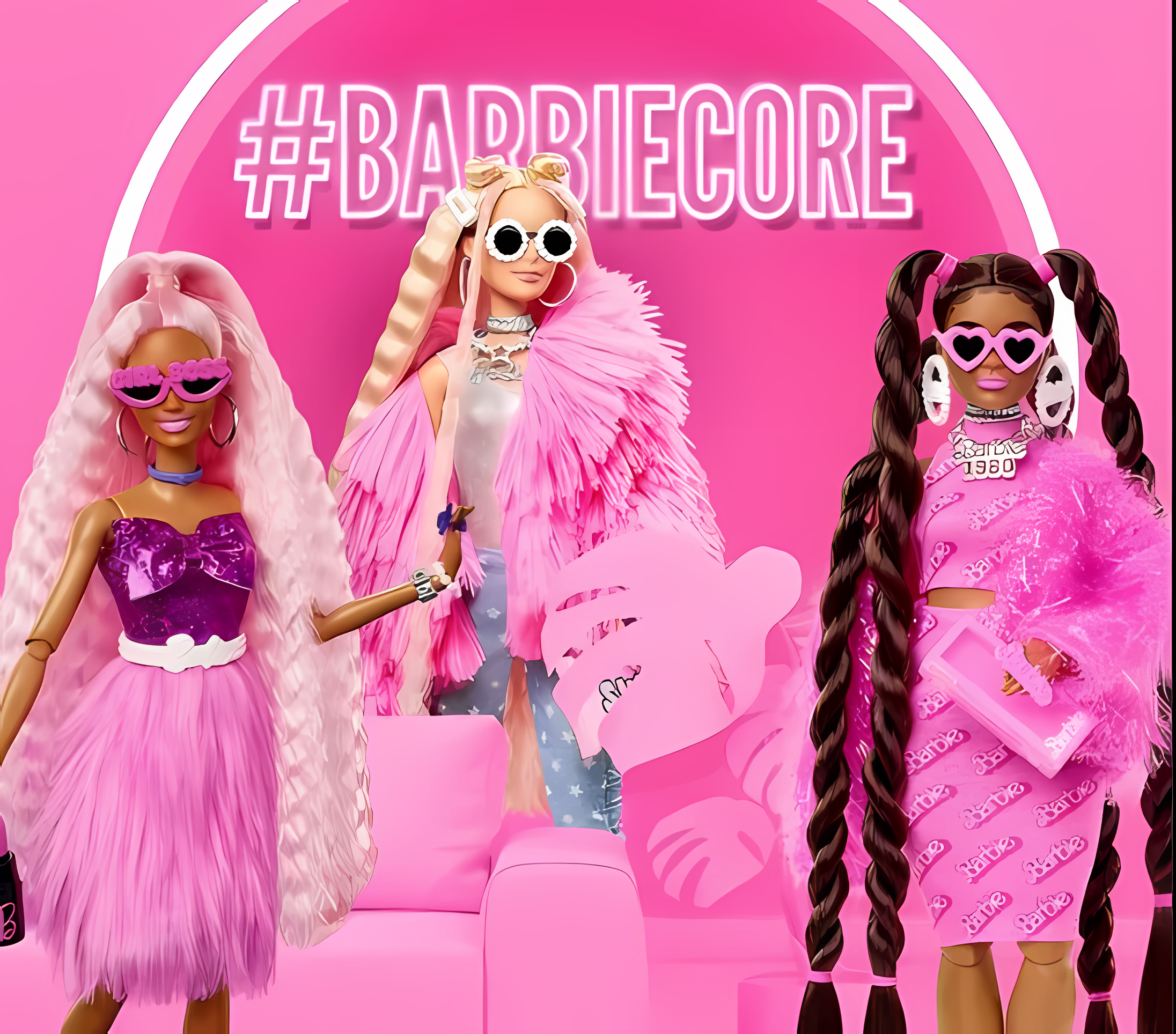
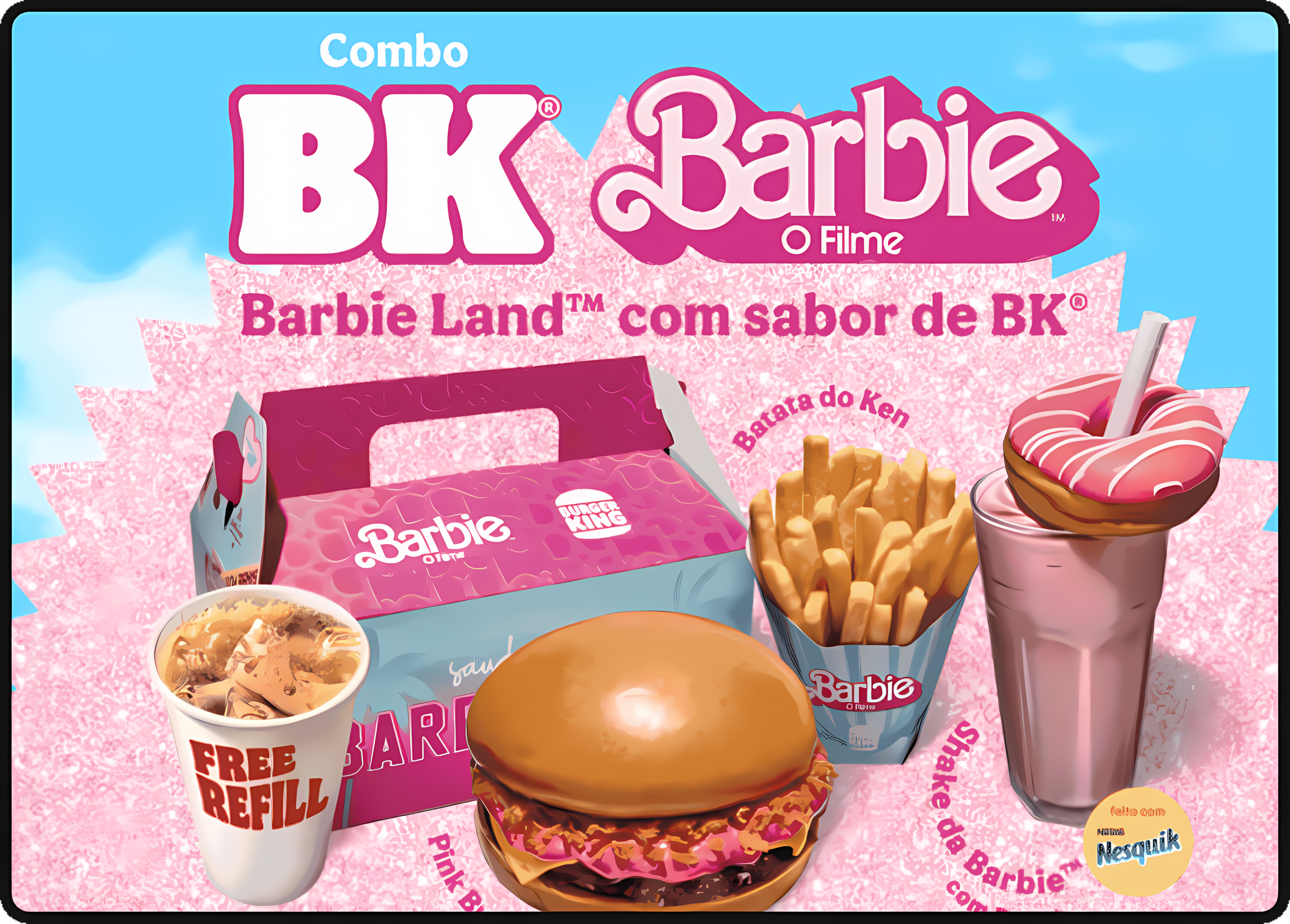
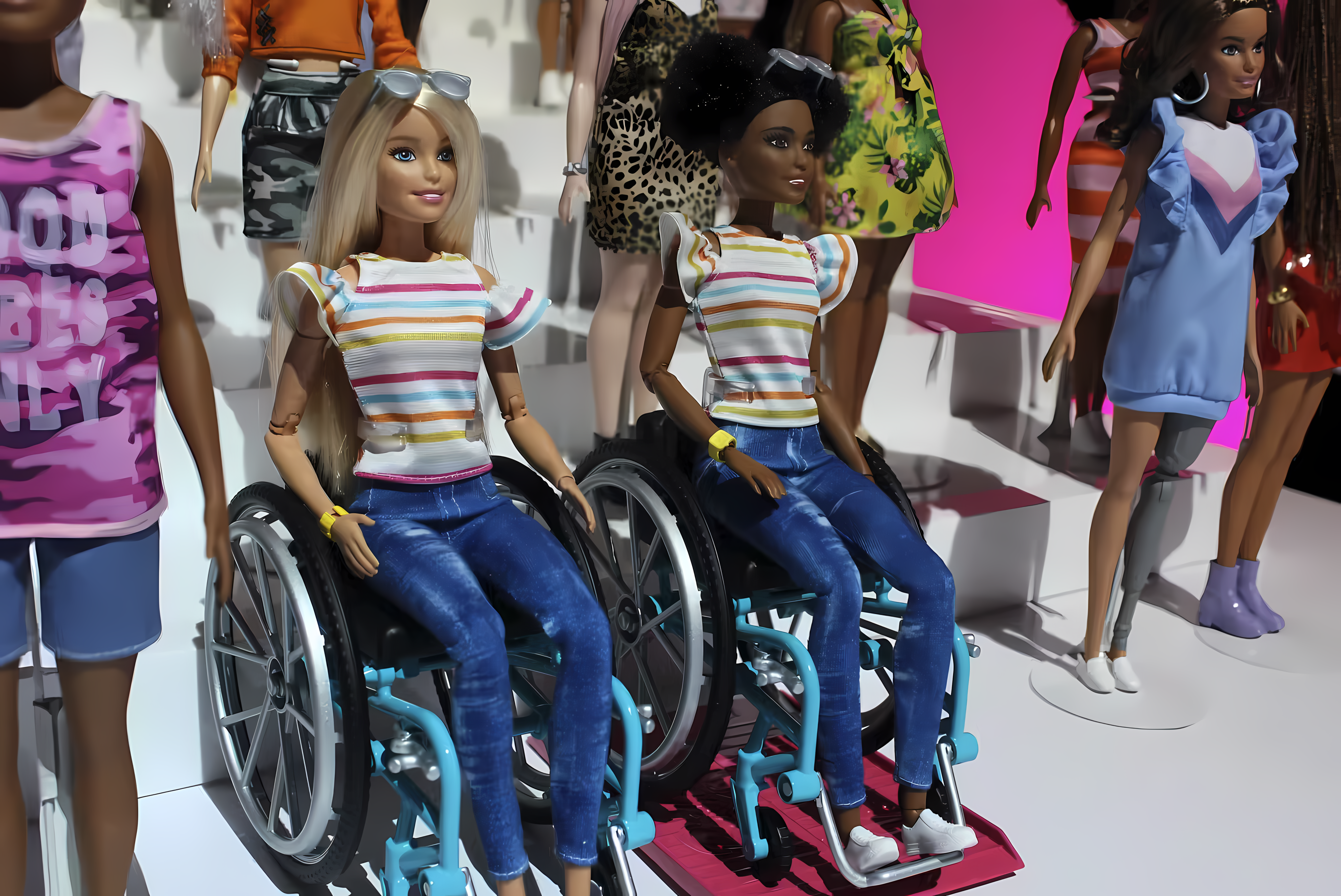
Launched in early 1959,
Barbie dolls deemed provocative by concerned parents (Morrison, 2023). The doll was invented to be a career-oriented doll for young girls.
Barbie soared in popularity over the years, and the public demanded releases, such as of Barbie’s boyfriend, Ken, and the debut of her best friend, Midge, and little sister, Skipper (Morrison, 2023).
Throughout the 1970s, Barbie continued to expand.
In the 1980s, the first African American and Latina Barbies were established. This was the decade when the doll was streamlined and became a transmedia advertising avenue (referred to as “Barbie cinematic universe” – one of the highest-grossing media series of all time). “Barbie and the Rockers: Out of this world” made its TV premiere in 1987. With its success, it led to 2001’s “Barbie Nutcracker.” Other titles include “Barbie as the princess and the pauper.” “Barbie as Rapunzel,” and “Barbie: Mermaidia” (Morrison, 2023).
As the Internet evolved with the new digital landscape,
Mattel integrated Barbie into modern media facets such as computer games, web series, and new streaming media content. These digital ventures inspired over 400 children’s and young adult books, 100 comics, and thousands of derivate Mattel toys. By then, Barbie delineated the archetypal all-American girl. The doll also reached key markets in Europe, Latin America, and Asia. Later, the doll assumed a variety of ethnicities, nationalities, body types, and ensembles (Morrison, 2023).
In the 1990s, Barbie was internationally recognizable.
It was then Mattel opened engaging advertising attractions such as the combination Barbie store, spa, design studio, and café in Shanghai, offering hot pink merchandise (Morrison, 2023).
From 2011 to 2015, Barbie was in crisis.
Sales dropped due to the culture rise of body positivity and backlash against a doll that represented an impossible beauty standard of body shape. Barbie was so anatomically impossible that if she were real, she would be unable to lift her head, store a full liver or intestines, or menstruate. The backlash raised concerns about the influence toward girls in development, especially how and what they learn about gender. The doll has been identified as a risk factor for thin-ideal and body dissatisfaction for young girls, encouraging motivation for a thinner shape, damaged body image and self-esteem, and eating disorders (Khan, 2023).
In response to this backlash, Mattel launched a new line of Barbie dolls in 2016, aimed at bringing the brand into the 21st century with more racial and body diversity (i.e., some of the dolls had different body shapes, sizes, hair types, and skin tones; they used wheelchairs or prosthetic limbs; a later collection introduced Barbies who were bald, or who had vitiligo, a skin pigmentation condition). “They’ve really dedicated a lot of effort and time into creating dolls of more sizes and of races and of different occupations, and kind of really being a brand that’s trying to show that girls and women can do whatever they want,” said Hilary MacMillan, a Toronto fashion designer (Benchetrit, 2023). Mattel, as many other businesses joining the “inclusivity revolution,” knew that diversity sells, and since the 2011-2015 crisis, the company is trying to make its brand relevant for contemporary consumers (Khan, 2023).
Barbie was also given a voice (Barbie Vlogs), where she expressed her views on issues such as depression and the “sorry reflex.” In 2019, a gender-neutral collection called “creatable world” was released to open up gender expression possibilities for children to play with Barbies. This was an effort from Mattel to redeem the company from the missteps of the past, such as “Teen Talk Barbie”, programmed to say “Math class is tough!” or compulsory heterosexuality (Khan, 2023).
The Movie
Released in July 2023, this is a movie about the world’s most famous doll and the next step to make Barbie inclusive (Khan, 2023). Before it was released, the “Barbie” movie with its 90s costume design style was highly anticipated. Margot Robbie as Barbie and Ryan Gosling as Ken became more than the hot-pink fever. Expectations for the movie were around product placement opportunities for Mattel. However, the movie delivered a visually and thematically cohesive story about social pressures on women, men, and children (Herman, 2023; Morrison, 2023). It brought dress-up back and put feminism in the spotlight (Treisman, 2023).
The film exceeded projections, grossing $155 million during its opening weekend in domestic markets, and an additional $182 million internationally. The movie received an additional $22.3 million in previews on the day before the premiere, making it one of the top 25 all-time preview performances, securing the highest opening of the year (Miller, 2023). Global box office numbers for the film reached records: $1.44 billion. “Barbie” is the highest grossing film for a solo female director (Greta Gerwig) for Warner Bros., for 2023, and the 14th highest-grossing film ever. The film is not a franchise (Graser, 2023; Herman, 2023).
The ”Barbie” movie’s success was attributed to its captivating storytelling, visuals, pink/candy color, nostalgia narrative, and positive messages promoting empowerment and self-expression. Additionally, the promotion, partnership, publicity, and press coverage were extensive and broad worldwide. The film created a huge buzz (Miller, 2023).
Reflection of the American culture
The concept of the “American dream” has evolved. Initially, its core values focused on “hard work” and “achievement” but has since shifted to “consumerism” and “having it all.” Work and jobs are transient or short lived. This is shown in the way that Barbie is easily portrayed in different career paths (i.e., doctor, rock ‘n’ roll singer, flight attendant, nurse). Customers just need to buy another outfit or another doll, as stated by Dustin Kidd, Professor of Sociology in the College of Liberal Arts at Temple University (Volkert, 2023).
According to Sheri Lambert, Marketing Professor in Fox School of Business at Temple University, Barbie is grown up and similar to the women of 2023. She is fearless, goes out into the real world (this was not the case for Barbie in the 70s), and can do whatever she wants. Barbie was unrealistic regarding her physical attributes (not attainable for any real woman). However, today, Barbie’s message to young girls is that they can be whoever they want (i.e., a doctor, astronaut), as long as they work hard and have perseverance. She continues that Americans like themed things as they are portrayed in the film (Volkert, 2023).

Gender Roles
The Concept
Gender roles are generalized views or attributes prescribed to individuals based on their gender identity, mainly along the binary of male and female. There are many factors that reinforce gender roles, including but not limited to society, media, culture, parenting, peers, family, and environment. These gender roles are based mainly on contextual setting rather than biological circumstances. Gender roles can limit men or women from developing their own personal abilities and identities free of limitations. Gender intensification or differences between perceived expectations of gender and expression of gender tend to manifest in young years, impacting mental health, and triggering depression, anxiety, and suicidal thoughts (Sachdev, n.d., 2023).
Some harmful gender role stereotypes are (Brenan, 2023):
- Women are caring/nurturing
- Men are aggressive/providers
- Women are the ones who cook and clean
- Men go out, work, and pay the bills
- Men are strong and macho
- Women are fragile, dainty, and lady-like
The Film
The “Barbie” movie is certainly appreciated for promoting a global discussion on gender roles and feminist ideas (Puga, 2023). One of the main takeaways of the film is showing that the Barbie doll has changed over the years, which reflects the way that women’s roles in American society have changed (Volkert, 2023). The movie presents a diverse cast of Barbies of different races, body types, gender identities and sexual preferences (Khan, 2023). The main audience is female, and the story plot resonated with women. In the beginning of the movie, the scenes are pink fantasy world, where women call all the shots, and everyone has their perfect dream house fit for never ending parties. This is the world where women have complete control. When Barbie and Ken go to the real world and face a room of Mattel executives who are all male, reality comes back (Downie, 2023). Specifically, the film is around female empowerment and women’s struggles with appearance and toxic masculinity. Additionally, the movie’s message explores gender equality and women’s rights. The main goal of the film was to explore the conflicting emotions generations have had with the doll and her unrealistic standard of beauty. The movie trailer promised: “if you love Barbie,” and “if you hate Barbie,” then “this movie is for you” (Herman, 2023).
Beauty standards are culturally influenced and vary across different societies and time periods. In many cultures, unrealistic and narrow beauty standards have been promoted through traditional (i.e., television, movies, ads) and digital/social media (i.e., websites, Instagram). These “beauty” standards prioritize specific physical attributes such as body shape, skin color, hair texture, and facial features, which have been criticized for promoting unrealistic expectations, fostering body image issues, and impacting women's self-esteem. The influence of media (i.e., TV, magazines, billboards, ads), including movies such as the “Barbie” movie, is relevant in shaping perceptions of beauty (Genderscope, 2023).
The “Barbie” film highlights where progress is needed. In America, women have entered the workforce in more significant numbers than in the past, but gender salary equality still needs improvement, and women still deal with societal and cultural stressors placed on them outside their career expectations (i.e., home, parenting responsibilities) (Downie, 2023).
According to the U.S. Census Bureau, women comprise 44% of the workforce, but only 41% occupy managerial roles. Women also tend to make 82 cents for every dollar that a man makes, and this amount drops drastically among women of color. Regarding responsibilities in the home, percentages are high when it comes to cleaning, cooking, decorating, grocery shopping, childcare, doing the dishes, and laundry. Contrary, men's household responsibilities are investing money, caring for the cars, and yard work (Downie, 2023).

Ken-ergy
Some critics consider the “Barbie” movie as the perfect opportunity to spark long overdue conversations about representations of masculinity in the media, using the character of Ken. They question whether the movie is truly progressive in its depictions of masculinity. According to Proctor (n.d.), men are an audience frequently misunderstood by brands and seen as one-dimensional to market to. She continues by saying that there is a large disparity between how men see themselves and how advertisers think men see themselves. In a recent report, it was found that two thirds of U.K. and U.S. Millennial men feel advertising and media negatively portray them. Men feel suffocated by expectations imposed on them by society and the media. There is a call for brands and advertisers to embrace the multitude of masculine identities out there, which would help to achieve a “true gender equality” (Proctor, n.d.).
Further, critics do not believe that the “Barbie” movie portrayed Ken in a fair way, especially based on the archetypal figures present in the movie, which could be disruptive to initiating a gender role conversation. In Barbie Land, Ken feels deep insecurities and lacks fulfillment in life. But, women run the world and men are only the support for them. Ken has strong desire to be recognized as more than “just Ken.” But Ken’s dreams reflect the damaging ideals society is trying to break away from. When Barbie and Ken enter “The Real World,” Ken believe he can achieve his dreams of being more than Barbie’s surrogate. However, the “Real World” implies that to be happy, men must base their self-worth on success, wealth, job status, assets, and popularity. Men, who do not meet these expectations cannot achieve their masculinity, and thus are not worthy. As for the film, Ken ends up dissatisfied with who he is in both worlds, which have unattainable expectations and have toxic stereotypes. The film explored Ken’s complicated relationship with his masculinity (Proctor, n.d.).
Patriarchy
The “Barbie” film conveys the patriarchy’s adverse effects on womanhood and the disadvantages and explicit sexualization women face on an everyday basis (Morrison, 2023). For Vanessa Schwartz, a USC history professor and expert in film and entertainment, the “Barbie” movie also exposes many assumptions of patriarchy, despite the fact that it does not reject the men outright. According to Schwartz, the movie showed that “it is time for men to accept their role, which is not the patriarchal privilege, but to accept that not everything about women is made for them.” With no intentions to despise men, as some critics have suggested, the movie offers a “healing moment.” “It is the idea that you can destroy patriarchy without getting rid of men,” she continues (Herman, 2023).
When Barbie visits “The Real World,” she is struck by how seemingly reversed it is from the Barbie World. However, for Ken, this is the opposite. He brings this ethos back to Barbie World, and through the “Patriarchy” transforms it into a testosterone-fueled world, which is simplified and plastic. Through the plot, the Barbies have the Kens turning on each other, but help them realize that their happiness should not be dependent on the Barbies or anyone else. This is the only way society can work. The movie shows that society run by women may have different problems than the one run by men (Patch, 2023).
Another aspect of patriarchy lies in the fact that the male character Ken is not much more than an accessory in Barbie Land. It leaves Ken expressing a lack of purpose. When Ken is exposed to a more male-centered society, he quickly embraces the patriarchy. He brings it back to Barbie Land. With Ken in charge, the Barbies enter a submissive and stereotypical female role, while the Kens take control or a leadership role. The Kens revert to violence and “toxic masculinity” as the only way to communicate their feelings and needs. Men see higher levels of mental health issues and perpetuation of violence to themselves and others. They are more likely to misuse substances and engage in violent behavior and more likely to die by suicide than women (Downie, 2023).
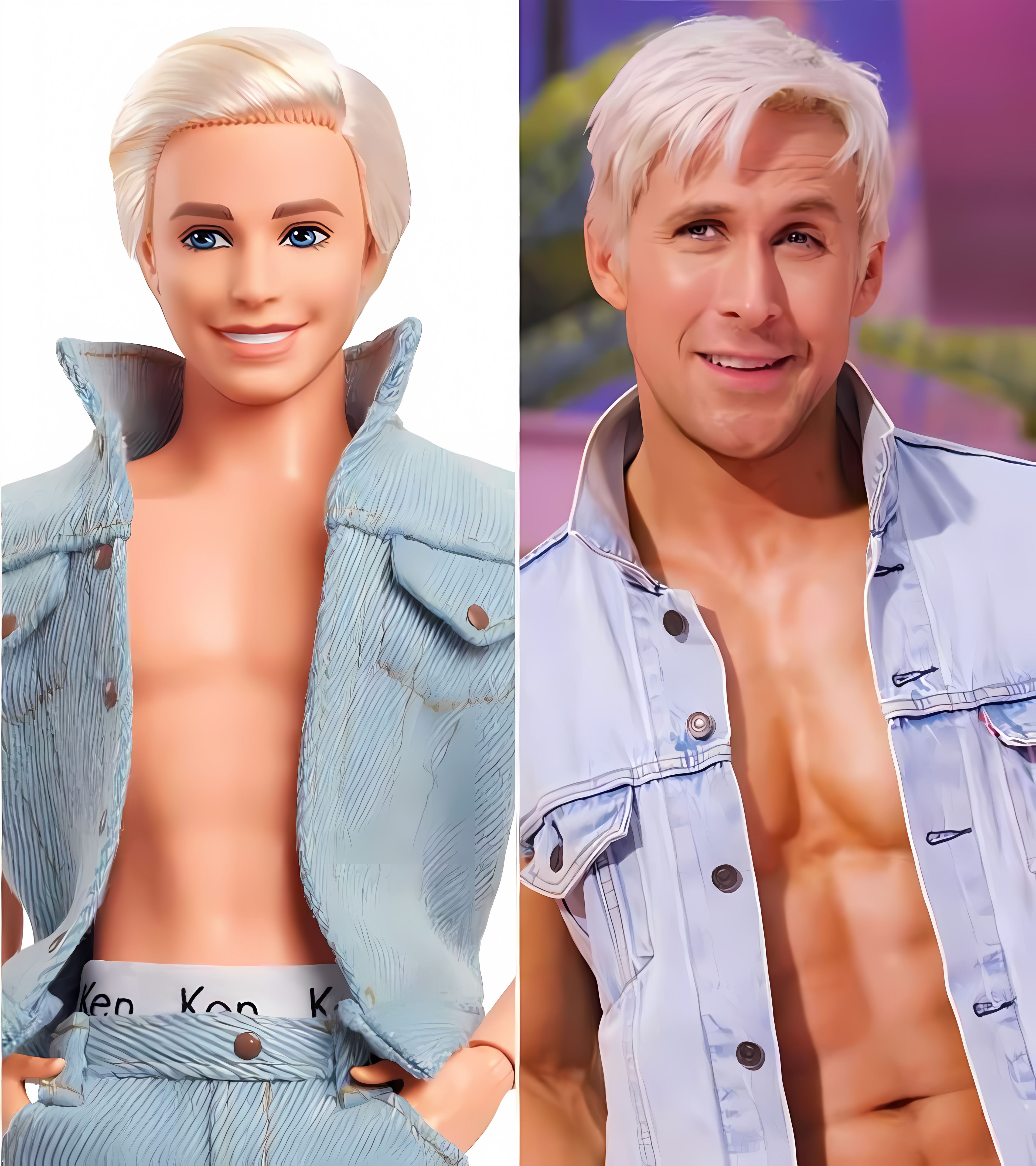
Feminism
A doll that has long been criticized for perpetuating outdated gender norms and an unrealistic body image is thoroughly discussed in the film as a “feminist icon” (Treisman, 2023). “Barbie” opens in a version of a feminist utopia, that is, a world where women are rulers and men servants. Further, “Barbie” has been described as a “man-hating” film with extremely feminist views (Van der Meer, 2023). These inverted gender roles are based on radical feminist theories that consider women’s liberation will only be possible when feminist values, such as care and dialogue, are taken seriously, and women in power embrace them (Puga, 2023). Yet, Robbie Brenner, executive producer of Mattel Films, explicitly stated that “Barbie” is “not a feminist movie.” Indeed, the main character still represents a beauty standard of being tall, thin, blonde, and White, with diverse characters to support her narrative (Khan, 2023).
A core insight of feminism is that gender is an axis of power made of roles of superiority and subordination in society through economic arrangements and freedom (Puga, 2023). The movie takes places in “Barbie Land,” a portrait of fantasy with too much pink and a candy-colored, women-centered utopia, where Barbies hold the positions of power (mainly all of the jobs), and Kens are essentially peripheral. M. G. Lord, the author of Forever Barbie: The unauthorized biography of a real doll and co-host of the new Barbie podcast LA Made: The Barbie tapes, highlights the movie as an angry one. Greta Gerwig (movie director) has labeled “Barbie” as “most certainly a feminist film,” although Mattel executives have said the contrary (Treisman, 2023).
Barbie has faced much backlash over the years, particularly regarding her body image. Studies show that playing with ultra-thin dolls (as the case of Barbie) ties to negative body image and an increased risk of eating disorders in children. Additionally, there have been protests on Barbie’s traditional gender norms. For instance, in 1972, feminist groups gathered outside a toy fair to protest dolls that they claimed “perpetuated sexual stereotypes by encouraging little girls to see themselves solely as mannequins, sex objects or housekeepers.” In 2013, topless women’s rights activists protested the opening of a life-size Barbie Dreamhouse in Berlin, burning a doll on a cross and chanting “pink stinks” (Treisman, 2023).
Rebecca Hains, professor of media and communication at Salem State University in Massachusetts, states that “it was very skillful on the film’s part to address all the feminist criticism of Barbie, and say that the problem isn’t with Barbie, but what the real world brings to Barbie.” Although “Barbie” may look pretty in pink, the color relates to the ongoing and complex ideals of feminism and how they exist within a male-oriented society, she continues (Herman, 2023).
Contrary to the doll's background, the female-centric portrayal in the movie is not structured around Barbie finding a man. Barbie dolls were never marketed as wives or mothers, and Schwartz states that the “Barbie” in the movie skips the usual marriage plot. The movie is about the Barbie telling a story of what she has represented to so many generations of women and children, without being a subservient bride. Specifically, she has been a significant role model of a successful, independent, career-focused women (Herman, 2023).
Schwartz compares Barbie to Taylor Swift in the sense that both proved in 2023 that women are a powerful economic force. “First, they are both blond and beautiful. Second, the two icons want to be taken seriously” as Taylor Swift stated recently that “I want to wear pink and tell you what I feel about politics” (Herman, 2023).
A remark from the associate professor of English and author of the 1994 Forever Barbie: The unauthorized biography of a real doll, M. G. Lord, “All the key players in the creation of the doll were women. She (Barbie) was a doll invented by women for women to teach women, for better, sometimes worse, what was expected of them by society” (Herman, 2023).
According to Lord, Barbie’s message was “proto feminist” given that she came with the paraphernalia for a self-supporting career. “…She’s got that body, no husband, and the ability to make a living in a real field.” Additionally, she has a link to Helen Gurley Brown’s 1962 book Sex and the single girl – a plot of women’s financial and sexual autonomy. Although the Ken doll was introduced in 1961, Barbie got her first DreamHouse in 1962, historically, a decade earlier before most American single women would be able to own their own home and bank account (Herman, 2023; Treisman, 2023).
Barbie has changed over the years in the same way as womanhood. For instance, in 1980, Black and Latina Barbies were created. In 1985, a female empowerment ad campaign was released featuring an anthem in which girls sing “We can do anything, right Barbie?” In 1990s, Barbie ran for president. In 2016, new Barbie bodies (petite, curvy, and tall) were released. As of today, we can find Barbies with disabilities (i.e., Down Syndrome, with props such as hearing aids, colostomy bags, and wheelchairs), and the ones created after inspirational figures such as Jane Goodall, Naomi Osaka, and Laverne Cox. Barbie is more than an image. She has been a metaphor for many years (Treisman, 2023).
The “Barbie” movie reflects some flaws in some viewpoints of the feminist movement. While Barbie and her friends live in a female focused world, it is an oversimplified mirror of how girls play with Barbies, and how (the airhead boyfriend) Kens and their feelings in this world do not matter and are unnecessary except in relation to Barbies. In other words, the film highlights the unimportance of Kens – they have no focus, goals or accomplishments of their own (Chance, 2023; Patch, 2023; Treisman, 2023). According to Dustin Kidd (Sociology Professor at Temple University), whether or not Barbie is a feminist depends on the interpretation and interests of the audience (Volkert, 2023).
In short, women’s movements historically have always been concerned with gender-based discrimination in health care (reproductive justice/rights, access to medicines, equal treatment for individuals with disabilities, obesity) and securing access to safe abortions and dignified childbirth service and contraceptives (i.e., unprotected sex, which drives transmission of sexually transmitted diseases and unwanted pregnancies). The feminist movement deals also with better access to social security benefits, education, and equal labor rights. From this viewpoint, the movie is a small glimpse of feminist ideas regarding gender inequality (Puga, 2023).
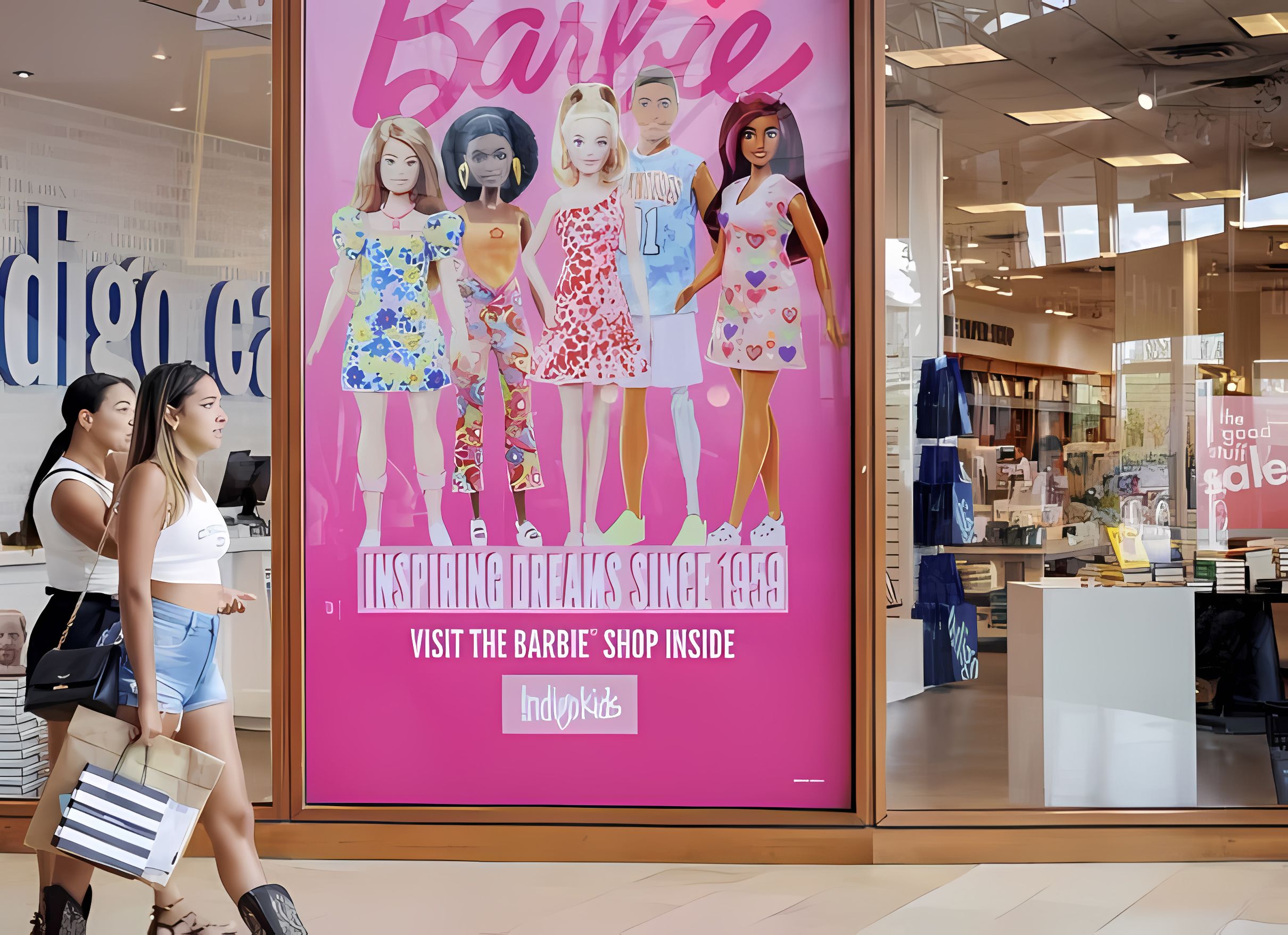
Stereotypes
In the “Barbie” movie, stereotypical Barbie and Ken encounter gender-based discrimination and patriarchy. Ken learns what patriarchy is supposed to mean based on a book (most likely written by a man), and Barbie’s traditional femininity is questioned by two young students in a high school (education confronting gender stereotypes) (Puga, 2023).
Further, Barbie is the stereotypical straight blond hair, White/Caucasian skin, beauty ideal, which Margot Robbie represents so well. According to Rebecca Hains, Professor of Media and Communication at Salem State University in Massachusetts, “The film expanded the general idea of what Barbie looks like and what Barbie can be.” In the movie, Barbie has a range of skin tones, body shapes, and hair colors and textures. Representation matters in the media, and the pretty blond Barbie was not immune to societal pressures, which Mattel started adjusting around in the past decades. The movie plot challenges the audience to change how they see Barbie and her in context (Herman, 2023).
Femvertising and Marketing Approach
Femvertising is a concept of a marketing strategy used by businesses to sell their products and services to women. It capitalizes on feminist ideas and female empowerment to engage and resonate with women. The term was first used in the 1990s but gained special attention in the 2010s because of the large-scale adoption by many companies in their marketing strategies (Clara, 2023).
When the Barbie doll was released by Mattel, it came to the market with great criticism, particularly related to her oversexualized nature, unrealistic body features, and race. In addressing these issues, the Barbie brand was altered dramatically in the last couple of years. Mattel launched Barbies in various races and occupations. The doll’s life was turned into cartoons, and now, a movie. The doll has been around for over 60 years and became a major childhood memory for women worldwide. The “Barbie” movie was then produced to be a hit, based on its story line with strong emotional ties and nostalgic feelings. Moreover, the marketing team invested in an intensive femvertising strategies to sell the movie and brand it to its female target audience (Clara, 2023).
Barbie is a big-budget studio film for a children’s toy that has been unpopular and even controversial at times. The movie reported a $150 million marketing campaign, and a similar cost for the movie, including 165 collaborators, according to Mattel. In 2023, fans bought Barbie-themed designer shoes and pink Birkenstocks, ate Barbie ice cream, and exercised with Barbie inline skates. The movie inspired a Barbiecore fashion trend, which is still going strong. Barbie and Ken costumes were among the top looks in 2023 with extension to 2024 expected in terms of looks of “Barbieween” (Chance, 2023; Herman, 2023).
Barbie is the number-one girls’ doll brand in the world and has been for most of her 60-year lifespan. Girls received, on average, five Barbie dolls per year, and they played with them every day. Mattel reports that more than 90% of girls own a Barbie around the world. Its long-term marketing investment had built up a $700 million brand value before the release of the movie. The success of the movie is due mainly to the screenwriter, who understood and validated the powerful mixed feelings generated by Barbie. “We loved her, idolized her, chopped off her hair, made fun of her, and felt a little icky about the stereotypes and gender roles she represents” (Chance, 2023).
The marketing of “Barbie” is effective because they are selling two brands at once: the movie and the toy, and of course, the additional products placed in the film. According to Sheri Lambert (Marketing Professor at Temple University), the marketing at “Barbie” (the film) is reaching consumers at all levels: building awareness of the brand, buying the product, and following up afterwards (Volkert, 2023).
Media Spend
Media is regularly grouped and classified into three buckets (TLDR Business, 2023):
Paid media: any type of advertising, where the company is paying for someone to view, engage, or convert. Traditionally, this means insertion such as TV ads, print ads, and out-of-home (OOH). But today, very often, it means digital media spend, such as programmatic display ads, search ads, or midroll ads on social media platforms, particularly YouTube.
Earned media: tends to refer to marketing based Public Relations (PR) and influence, rather than simply paying to get the message out. It focuses on attempting to build customer trust by using existing relationships between influential figures, institutions, and the public. It is not as one-way communication either. Those focus on earned media will be hoping to create enough World of Mouth (WOM) buzz that one begins to share the message organically without companies having to spend an additional penny.
Owned media: this is all about media owned by the brand (i.e., a company’s social media profiles, websites, apps). This is not free either. Owned media requires investment into content that audiences actually want to engage with.
When the three tactics are combined, brands are able to run all consuming and attention-grabbing campaigns, and audiences are constantly been bombarded by the same type of information, in a point that it makes the film unavoidable even for someone who has not seen it (TLDR Business, 2023).
The Movie's Target Audience
Mattel’s Barbie demographic is around young girls between ages 3-12. However, the 2023 “Barbie” movie went beyond this population. Unexpectedly, it found a substantial adult audience. That is, the film resonated with older viewers, including nostalgic adults who grew up with Barbie. This ability to evoke nostalgia in adult audiences created some marketing advantages for Mattel, as it increased interest in Barbie-related products and memorabilia (Miller, 2023).
The target audience for the film goes from the Silent Generation, who purchased the first Barbies for their children, to Generation Alpha, the newest Barbie consumers. Further, the film discussed the ways in which men are harmed by toxic masculinity, attracting male audience of different ages. Therefore, “Barbie’s” target audience is everyone, although it tends to appeal more to certain audience segments (Morrison, 2023).
Usually, big blockbuster movies are not marketed to women. As stated by Sheri Lambert (Marketing Professor at Temple University), the film industry (and the auto industry) does not market to women well, even though women have more buying power. This film is zooming on the female target, which is the market who will buy this brand and the brands placed in the screen plot. Women are also the ones who are going to take their children to this movie (Volkert, 2023).
The “Barbie” movie catered to a specific, passionate audience, who is anyone who used to play with the doll – 90% of women and their girls and teenage daughters (nostalgia sells tickets). In fact, the audience was 66.2% female and significantly younger, with 74.6% under the age of 29. In a good contrast, “Oppenheimer,” which premiered on the same day as the “Barbie” movie, had an audience of 70.7% predominantly male, and 52.9% over 30 years old. Further, the “Barbie” film focused on underrepresented audiences, reaching out to marginalized segments (i.e., LGBTQIA+, ethnic groups). This approach can generate and foster appreciation and brand loyalty (Van der Meer, 2023). In addition to the brand value and emotional engagement and the crossover adult/teen targeting, the big co-branding and licensing coup made a great marketing impact as well (Chance, 2023).
Mattel’s goal for Barbie was always to have moms to think of the doll as a strong and inclusive role model, and the film reinforces those brand characteristics. However, Barbie will always be about materialism since she is a fashion doll. In fact, Mattel releases a new line of Barbie products twice a year. And of course, there are the new Barbie clothes, bags, shoes, hair accessories, furniture, cars, Dream House, and accessories. The diversity of Barbies is expanding regarding the types of parents and their incomes (i.e., non-White, with disabilities), although the blonde, skinny, White, stereotypical Barbie will always be the star. Common features to all of them are similar: pointy feet, tiny waist, looking beautiful, and having things. These are facts that contradict the film approach or perception of feminism (Chance, 2023).
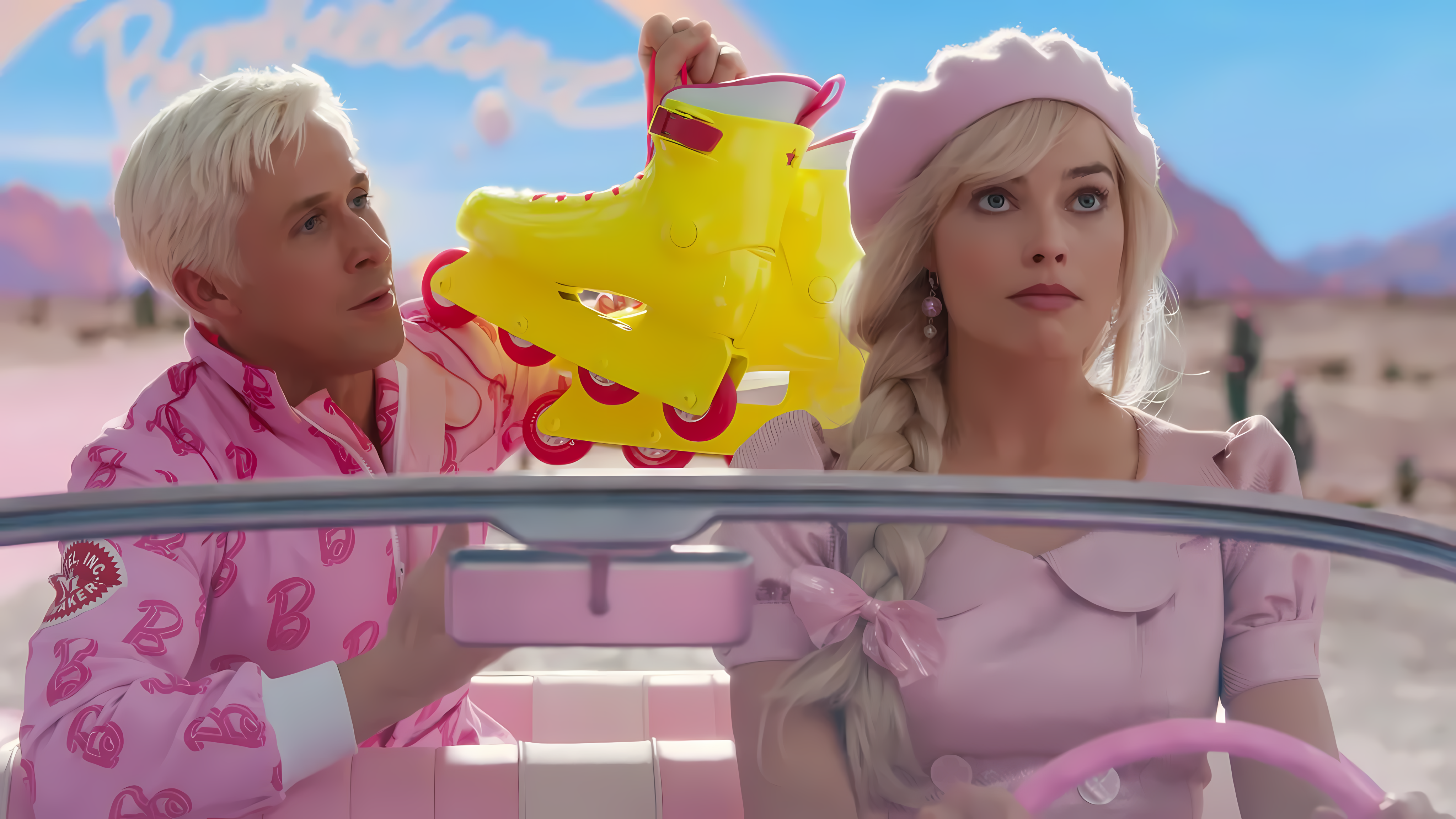
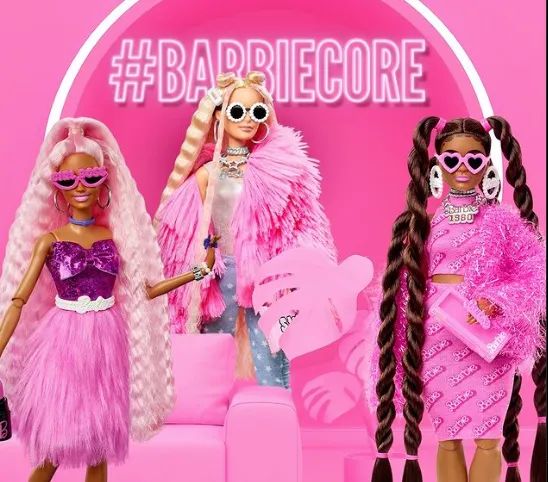
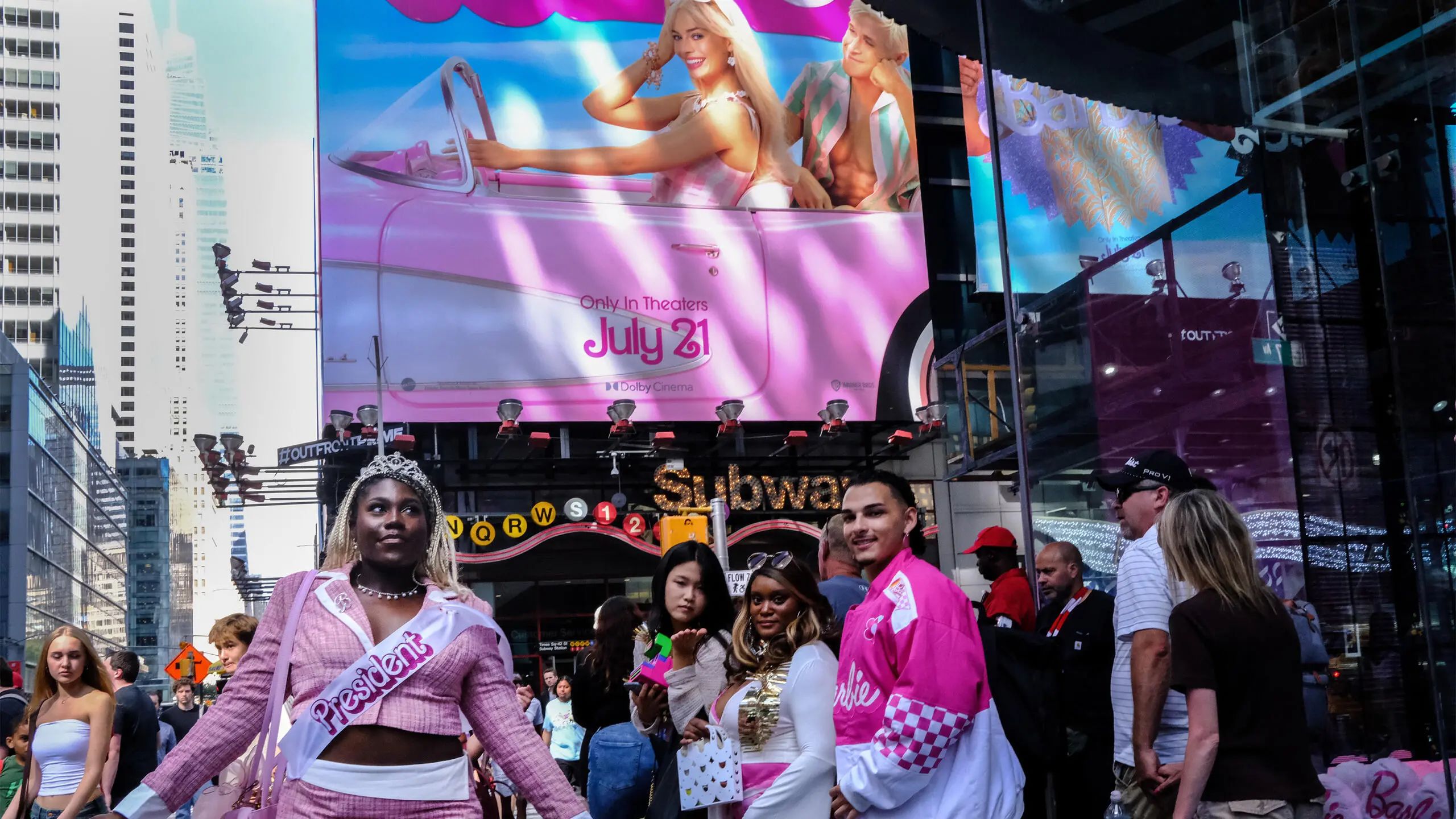
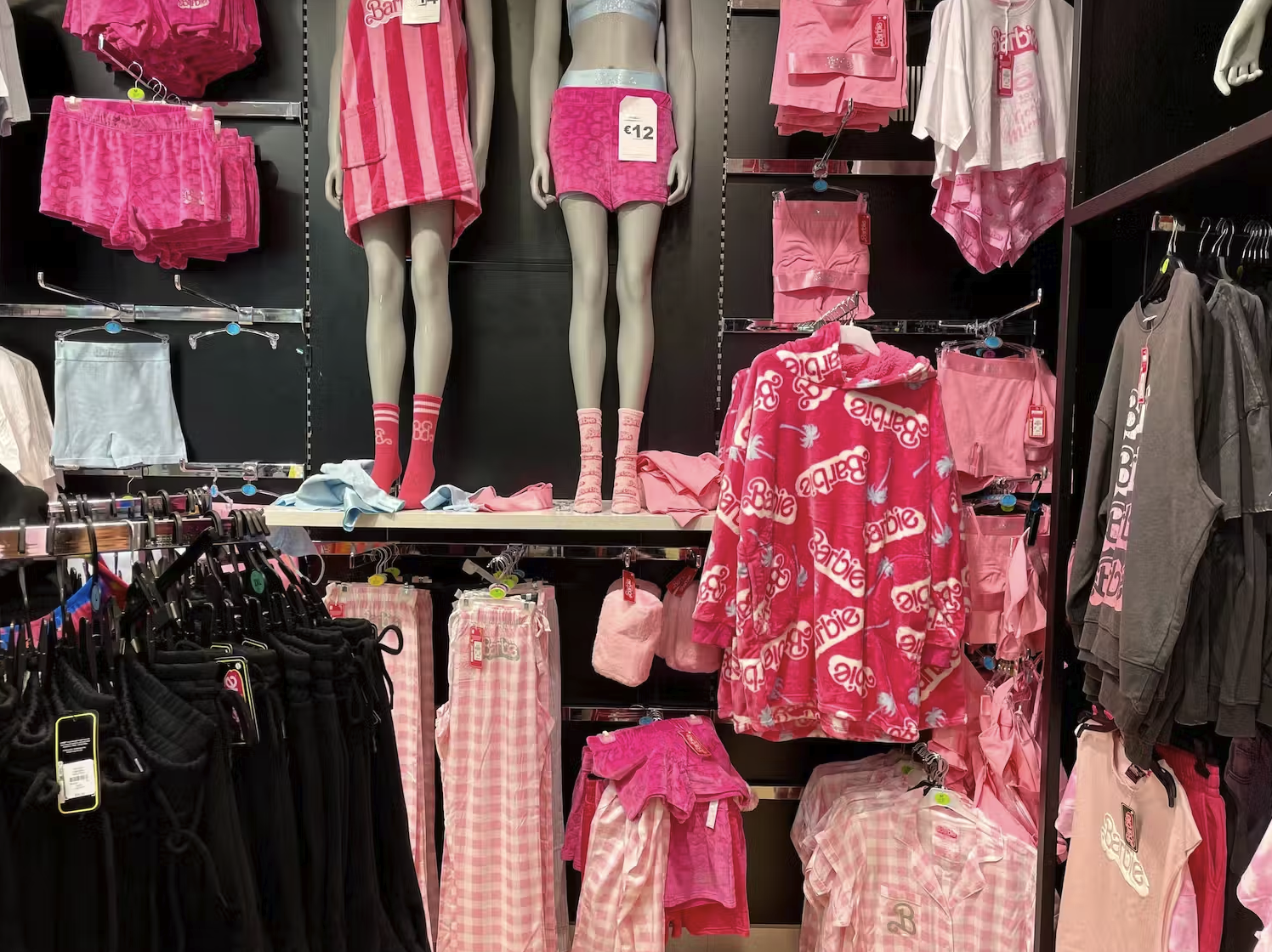
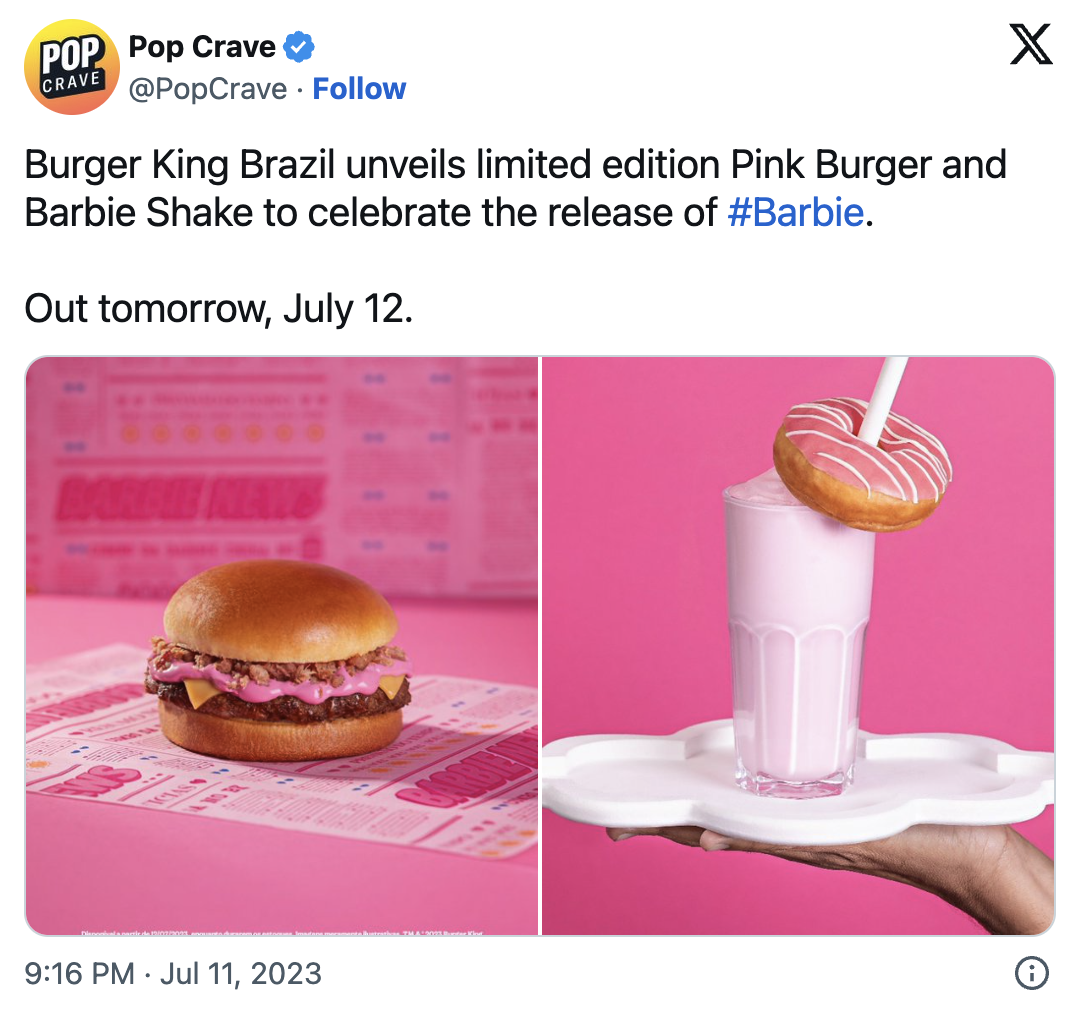
Crossover, co-branding, licensing, tie-ins, & product placement
The success of the “Barbie” movie extended to new sources of revenues. It created opportunities for Mattel to capitalize on merchandising. Specifically, Mattel introduced a wide range of spin-off products and tie-ins. There were collaborations with other companies for limited-edition Barbie merchandise such as clothing, accessories, and collectibles, which offered additional revenue streams and reinforced the Barbie brand’s relevance (Miller, 2023).
The Barbie film gained attention for its strong marketing campaign. From fashion brands to fast food chains, over one hundred collaborations were present to promote the movie (Morrison, 2023). See some of the partnerships in the table here.
Aldo, the Montreal-headquartered footwear brand, also got an official branding deal, according to Alison Neill, the company’s senior director of global brand strategy – “We think it can sell at any time of the year, but we have certainly benefited from the cultural moment [that] Barbie is having right now,” she told CBC News. The “Barbiecore” fashion trend – hot pinks and other vibrant colors – started the trend in 2022 as Barbie re-entered the market – an extended lifespan with tie-ins. “We tried to time the collection for this launch to coincide with the kind of peak-marketing hype of the movie,” Nail said (Benchetrit, 2023). Additionally, the film also uses Barbie as a toy and brand to reflect on issues of gender, feminism, body image, and the American dream (Volkert, 2023).
Warner Brothers and Mattel capitalized the crossover licensing opportunities (i.e., toys, adult fashion, car insurance). For instance, Hilary MacMillan, a Toronto fashion designer, released a Barbie-inspired clothing line, coinciding with the film’s release (Benchetrit, 2023). Some movie theaters promoted a Barbie-branded pink gin cocktail. Specifically, the Barbie film offered a significant publicity opportunity (Chance, 2023). And at Burger King locations in Brazil, customers could order a “Barbie burger,” which is a beef patty paired with cheese, bacon bits, and slathered in a bright pink sauce that the fast-food chain described as “smoky” (Benchetrit, 2023). Leading the movie premiere, Google also turned shades of pink for the brand’s famous color scheme (Miller, 2023).
This past summer, there were two airlines - United Airlines and Delta Air Lines - promoting Barbie on board. Both companies announced they added the “Barbie” movie to their inflight entertainment offerings. There was a different way the carriers announced the film’s availability. While United went full pink with five creative mock ups of its Barbie interiors, Delta, on the other hand, took a more conservative approach. The airline chose two images: one of its first-class seatback screens, and a promotional still from the movie. United also had some Barbie memes on Instagram. This summer, Mexico’s Volaris airlines also promoted “Barbie” with a painted exterior (Graser, 2023).
The “Barbie” film is well-suited for all of its brand partnerships, because it is a fun movie, stilling happiness. Barbie and Ken are fun and happy. Pink is a fun and happy color, and the brand partners are jumping on the bandwagon. Brands are looking for sales, and emotions, happiness, and sex appeals sell, according to Sheri Lambert (Marketing Professor at Temple University) (Volkert, 2023).
In Barbie Land, jobs are reduced to outfits, and consumerism in the film is tangible. There is no shortage of dolls, outfits, cars, furniture, and décor for sales. Barbie the doll lives inside a fantasy house and a fantasy world. Brand tie-ins for a movie are common in Hollywood. As Dustin Kidd (Sociology Professor at Temple University) says, the products sold for Barbie dolls expand and mimic her world in something similar to the real world (Volkert, 2023).
Marketing Endeavors
There are some marketing endeavors accomplished with the “Barbie” movie release in Summer 2023. Here are some (Clara, 2023; Morrison, 2023):
1. The Barbie character posters: These have been the most buzzworthy topic online since the movie release. They consist of promotional images and an AI tool that transforms selfies into Barbie movie posters, revealing the film’s star-studded cast, displaying headshots and brief role descriptions of each character (i.e., Issa Rae’s “This Barbie President”).
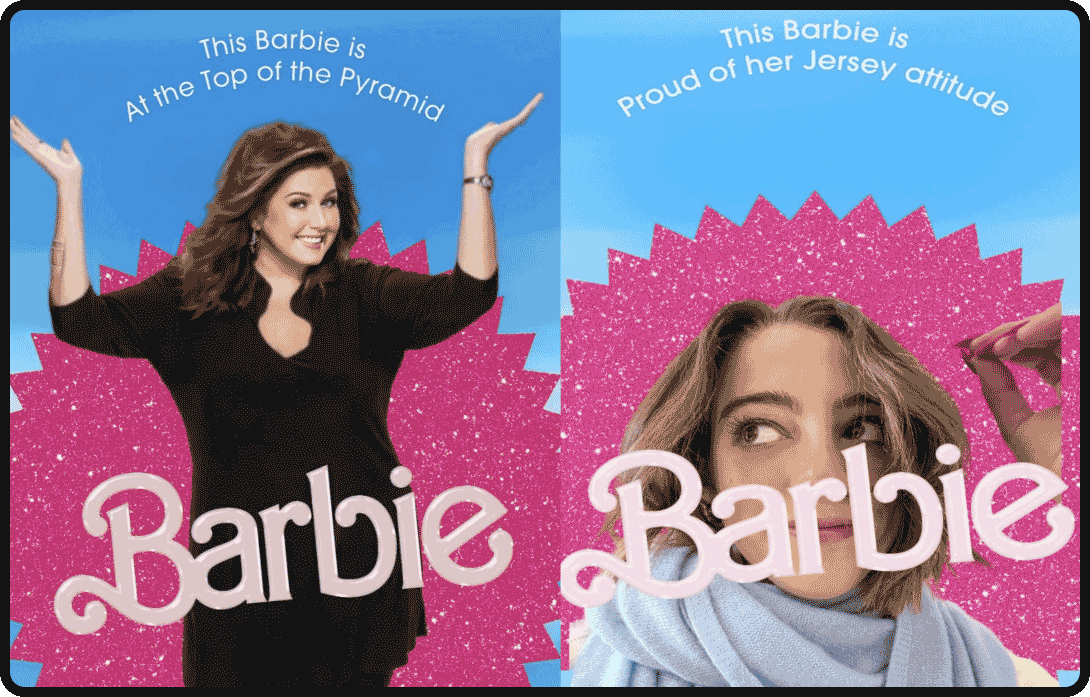
2. Barbie’s Airbnb DreamHouse: The classic Barbie Dream House, “hosted” by Ken, was bookable on the popular vacation home rental platform, Airbnb. It was a pink-slathered Malibu mansion, which allowed guests to indulge in the immersive Barbie experience. The oceanfront “picture-plastic paradise” was rentable for two nights and created an Internet buzz as well.

3. The Barbie Burger King meal: Burger King launched a limited meal in honor of the movie. A cheeseburger topped with bright pink sauce, a strawberry milkshake, and donut, and “Ken’s potatoes,” befittingly plain French fries inspired by a doll nicknamed “just Ken,” could be found in the Brazilian Burger King franchises. Although the meal was associated with a “Pepto-Bismol-reminiscent burger,” some believe that all publicity might be considered good publicity.
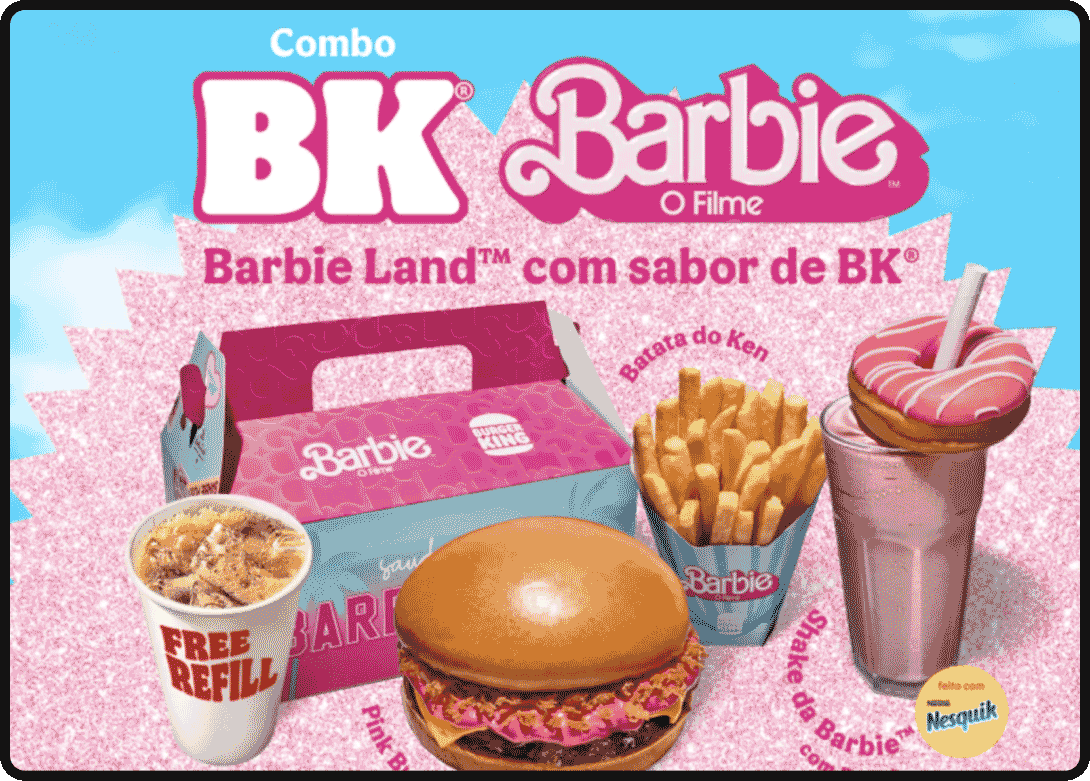
4. The Barbie soundtrack: Given the excitement of Generation Z and Millennials toward the “Barbie” film, its marketing team built its soundtrack around these demographic musical preferences by including pop and hip hop icons on its album such as Dua Lipa, Bille Eilish, Ice Spice, and Nicki Minaj. This generated a huge promotional buzz and expectations for the musical album release.
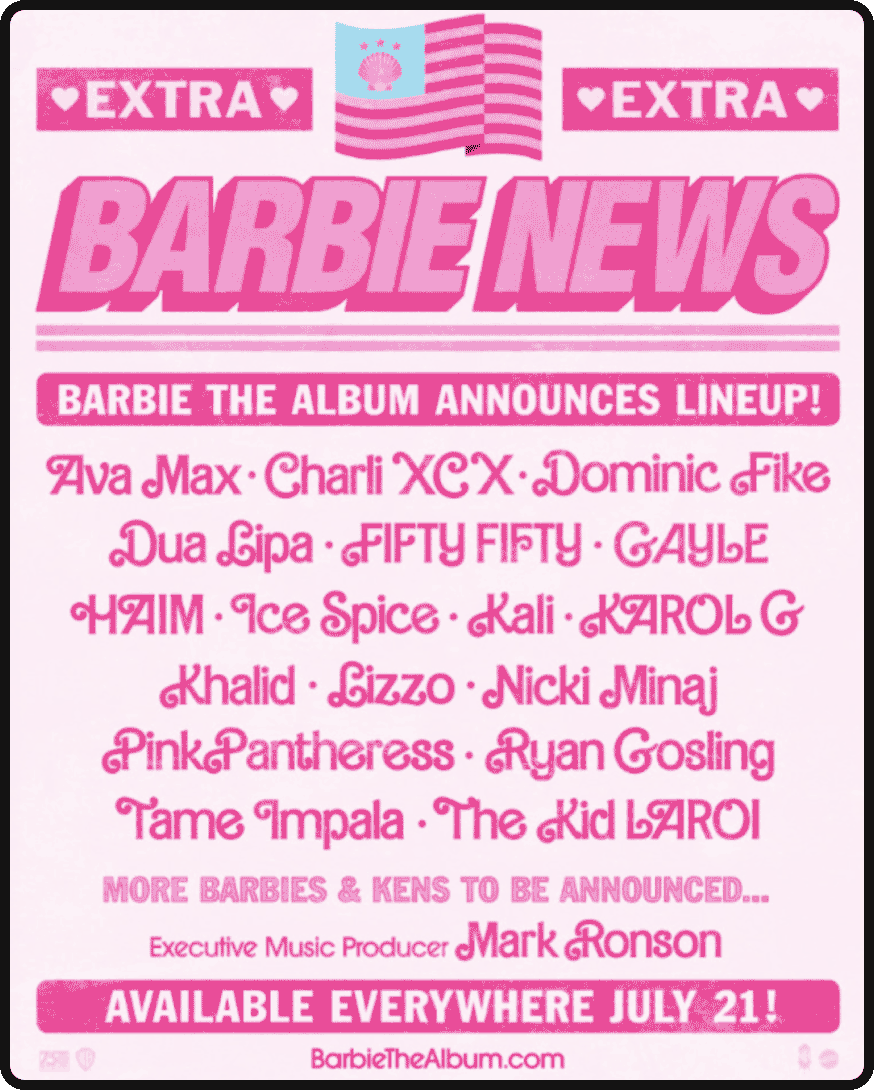
5. Barbie Xbox content: Xbox teamed up with Mattel to produce exclusive Barbie-inspired Forza Horizon 5 in-game content. Xbox users were granted the opportunity to follow the doll throughout a virtual Barbie Land, following her footsteps. This collaboration expanded the target audience mainly focused on the male demographic.

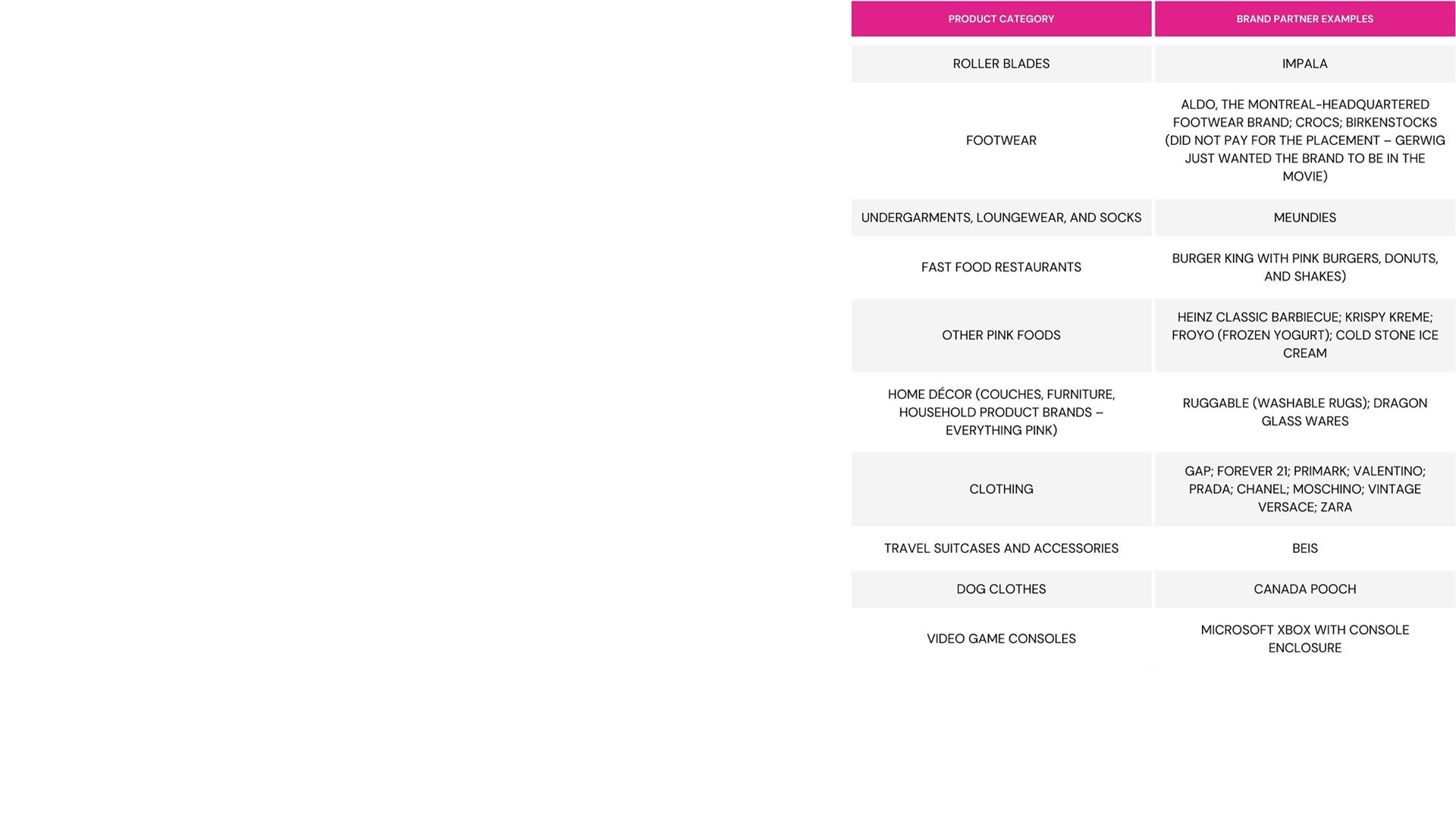
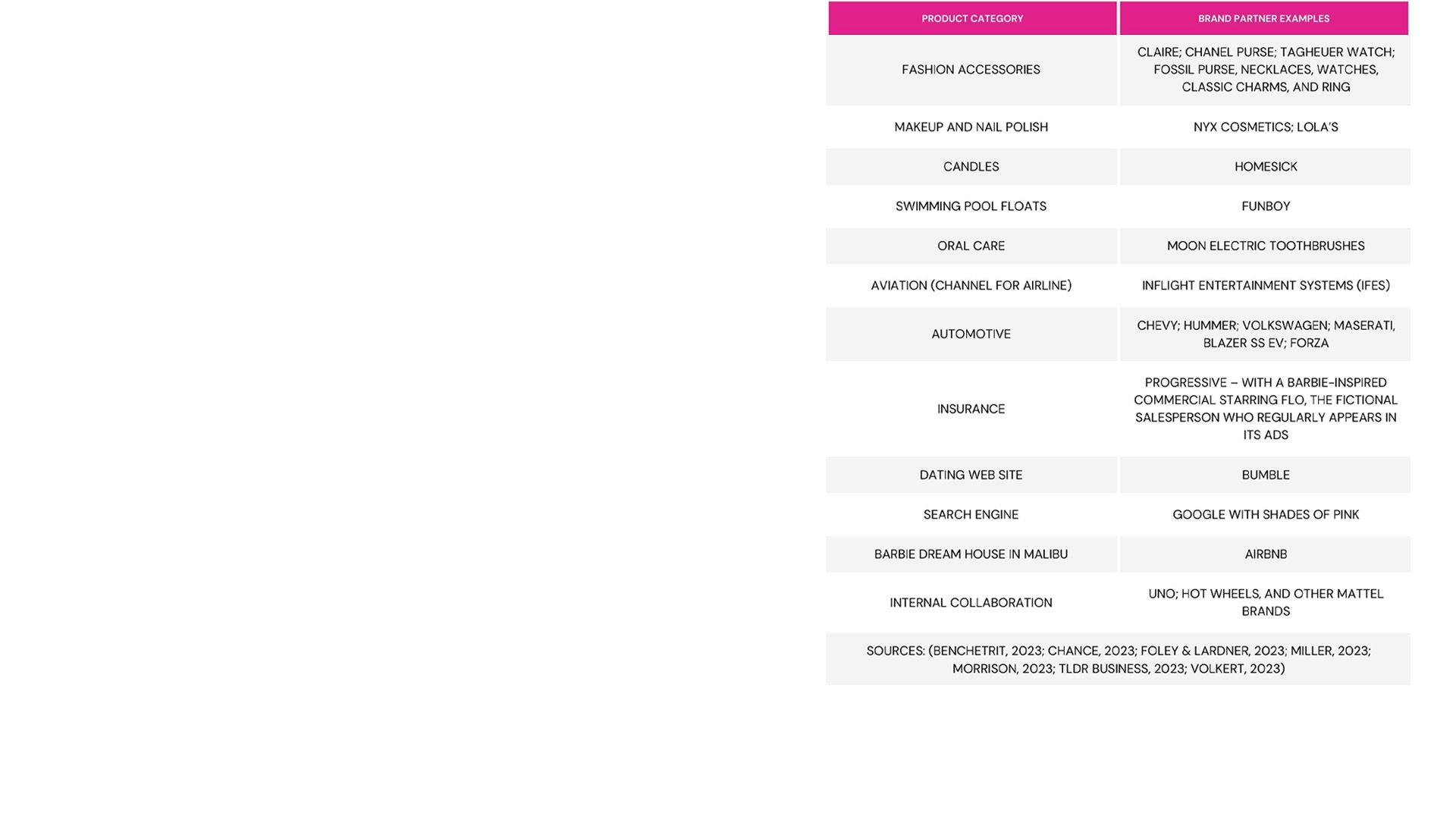
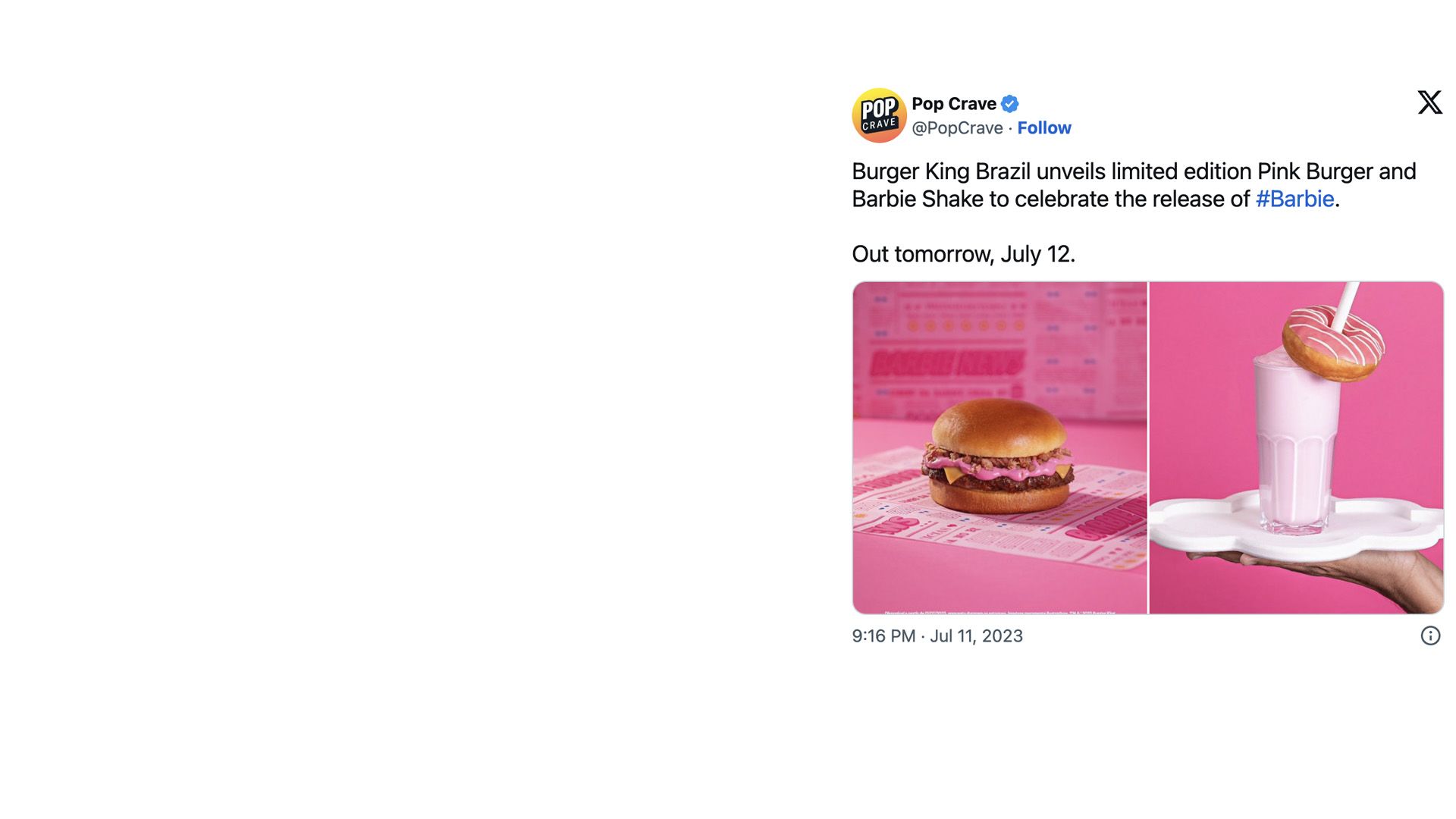
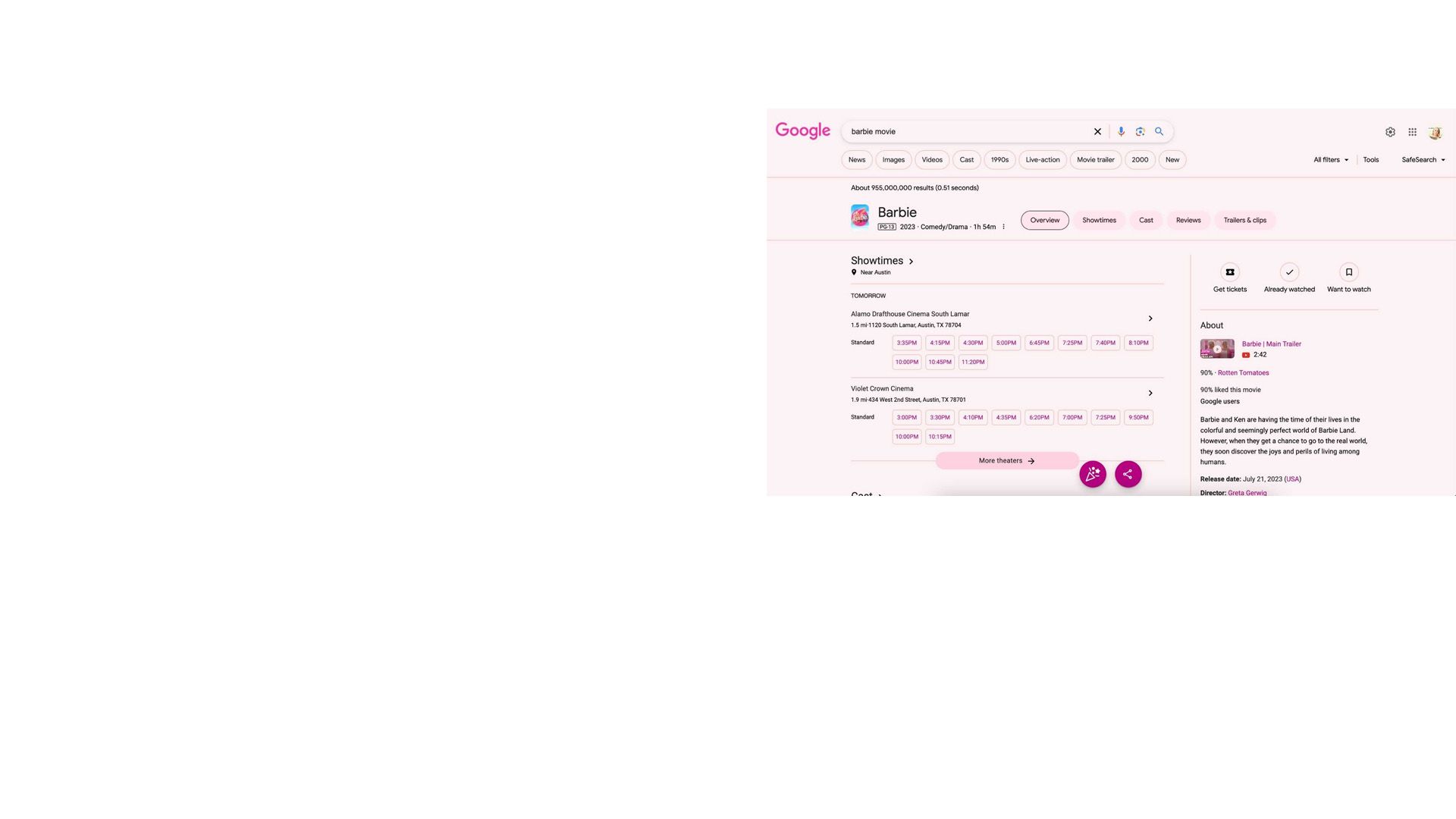
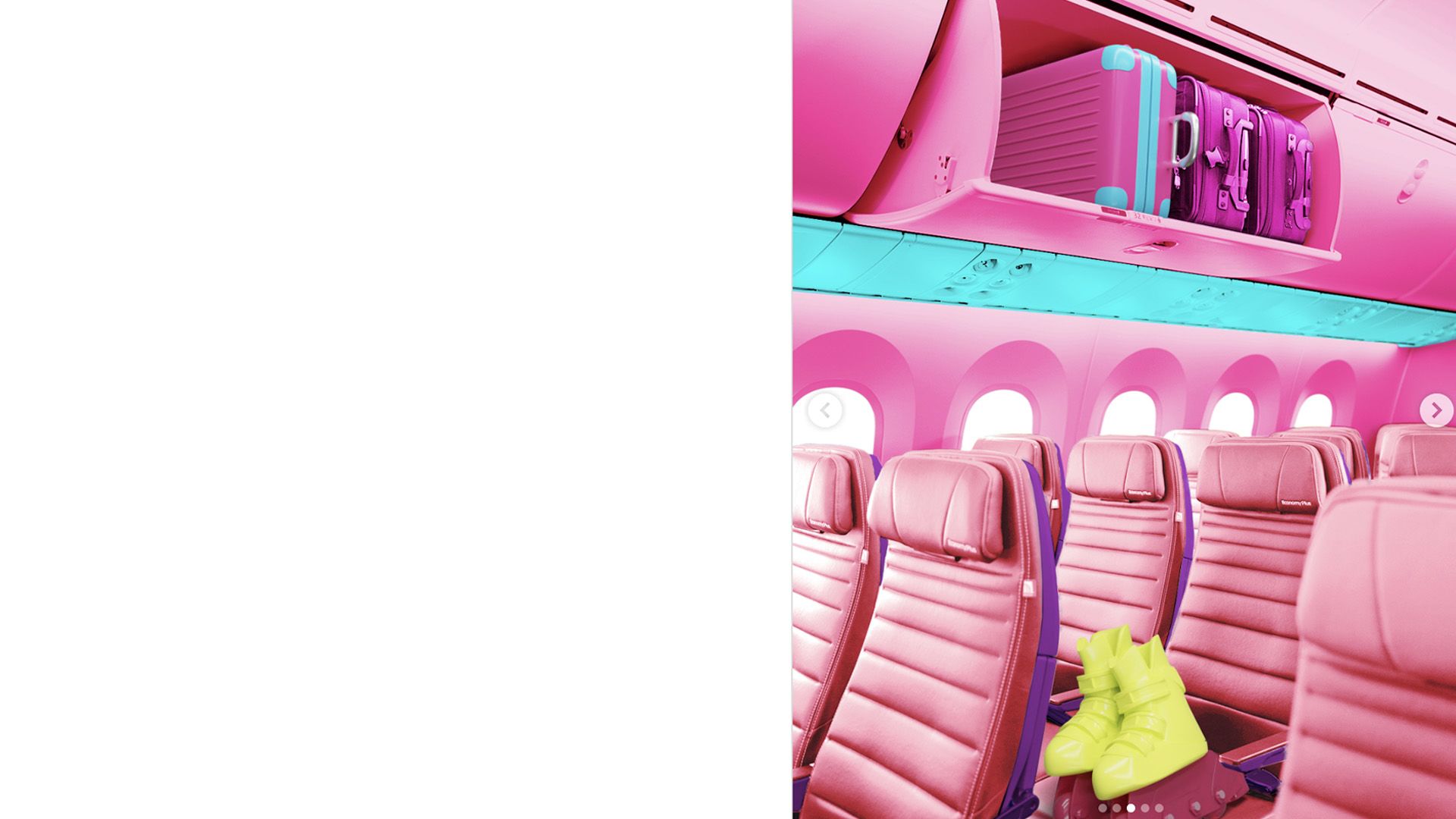
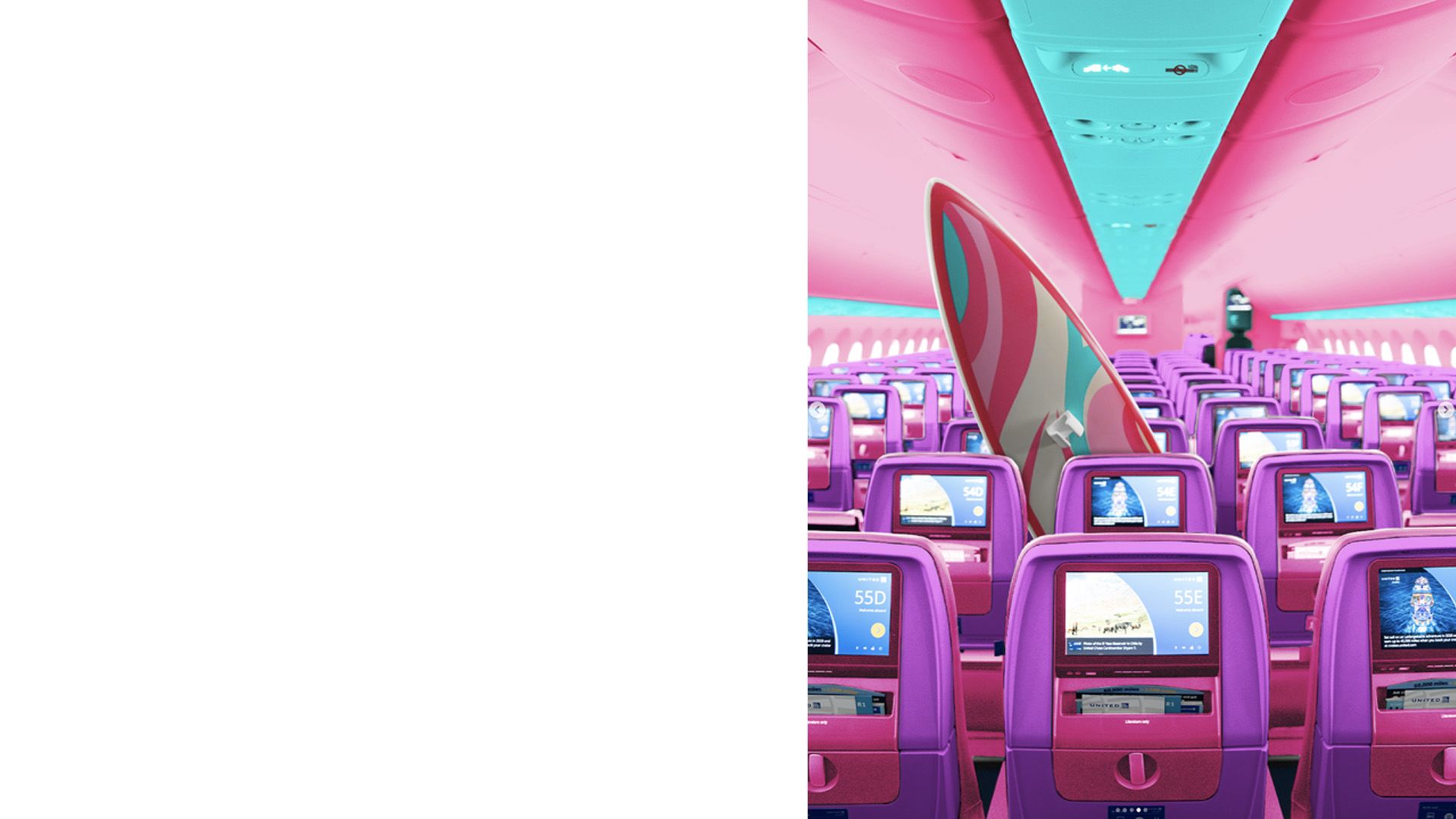
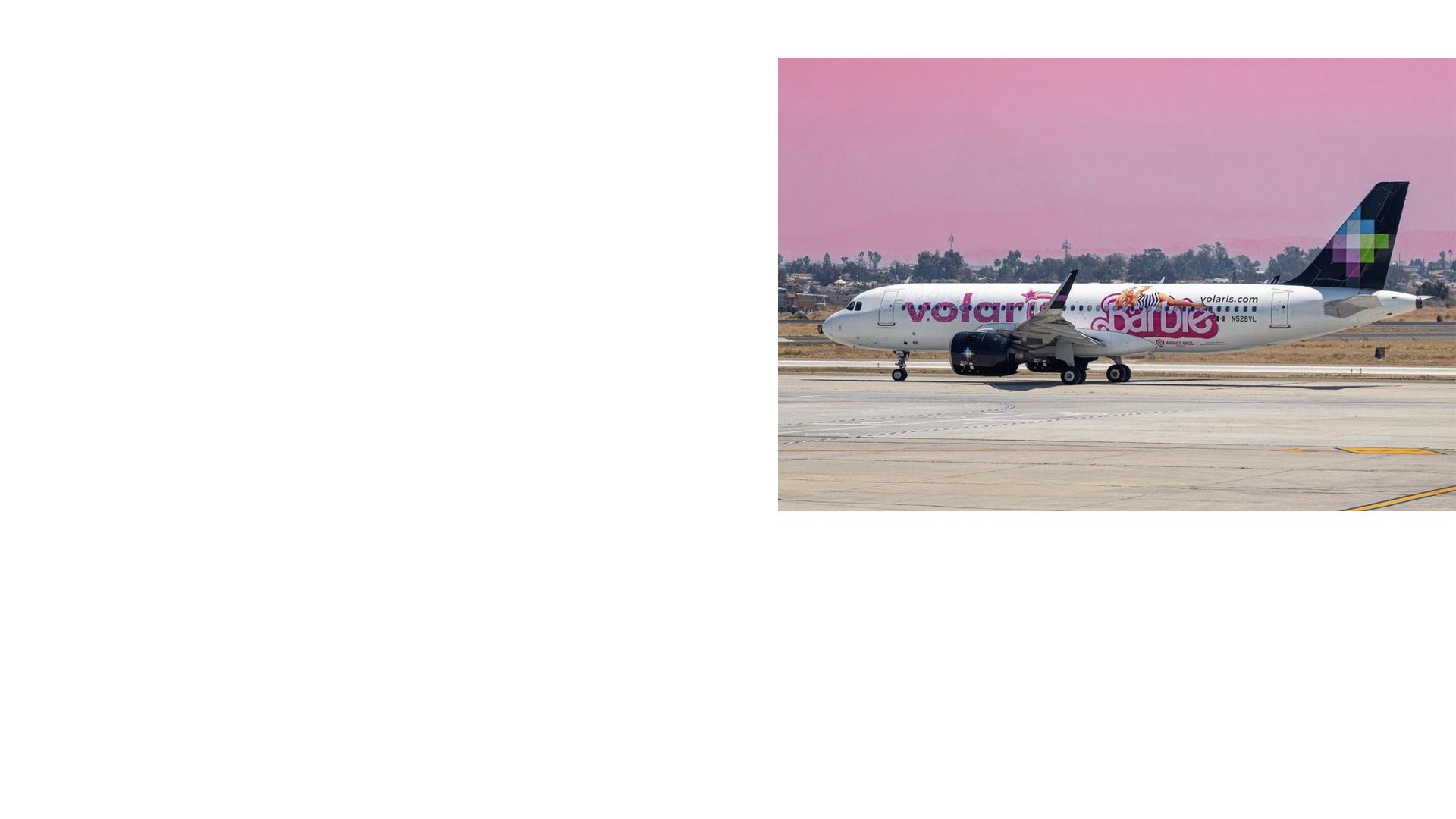
Marketing Winners vs Losers
Sameer Hosany, a Marketing Professor at the Royal Holloway University of London, and the author of The brand’s long-term popularity, predicts there will be winners and losers from the partnership with “Barbie” movie. It will depend on how much a product/service aligns with the brand. According to Hosany, “a lot the corporations are tapping [into] the renaissance of Barbie itself – and that’s why you would see [a] collaboration wave from designer brands to accessories, high fashion, shoes… It’s just because of that immediate fit of Barbie cutting across a number of product categories and brands,” said Hosany, which is what makes a potential partnership successful (Benchetrit, 2023).
Cross-promotion can always be a risky strategy, according to Hosany. Each brand reputation depends on the others. There is also the risk of “brand dilution,” in which a brand’s reputation or value suffers because it releases a product at odds with its usual standards (Benchetrit, 2023). Critics highlighted the “saturation” strategy, and the marketing ploy was relevant to revitalize and redefine the Mattel brand with a contested position and history (Khan, 2023).
Further, the number of brands in the movie can be overwhelming regarding recall, which is usually the ultimate goals of these placements or collaboration.
Marketing before releasing the movie
The first “Barbie” movie trailer was released in May 2023 together with character posters that turned into an online trend when Warner Bros. released a meme-generator for fans to use. After that, the marketing campaign only got louder and pinker (Benchetrit, 2023).
Influencer marketing teams
The “Barbie” movie has given influencers a valuable lesson: authenticity is relevant all times. For influencers around the world, the diversity in the film – for women and the LGBTQIA+ community and minority ethnic groups – delivers some valuable points. Acknowledging and elevating historically overlooked voices can lead to brand growth and strengthening relationships with minority groups (Van der Meer, 2023).
Self-awareness
The “Barbie” film made fun of itself and did not take itself too seriously. The feminism in the film is not about diminishing men. It is about lifting women up, as it is in the case of the toy brand since it was launched more than 60 years ago. The authentic approach of the movie is a positioning factor to raise and keep the conversation ongoing about today’s relevant topics (i.e., empowering minorities, ensuring accessibility, enhancing visibility). It is a way to positioning the brand and resonate with its audiences, customers, and stakeholders (Van der Meer, 2023).
Tokenism
Critics question the disingenuous efforts of the showcasing of underrepresented segments in the film, insinuating that it is insincere and detrimental to the brand’s image. Consumers can see through initiatives that lack genuine commitment and connections with the groups they are trying to reach, which can generate disappointment and brand reputation damage (Van der Meer, 2023).
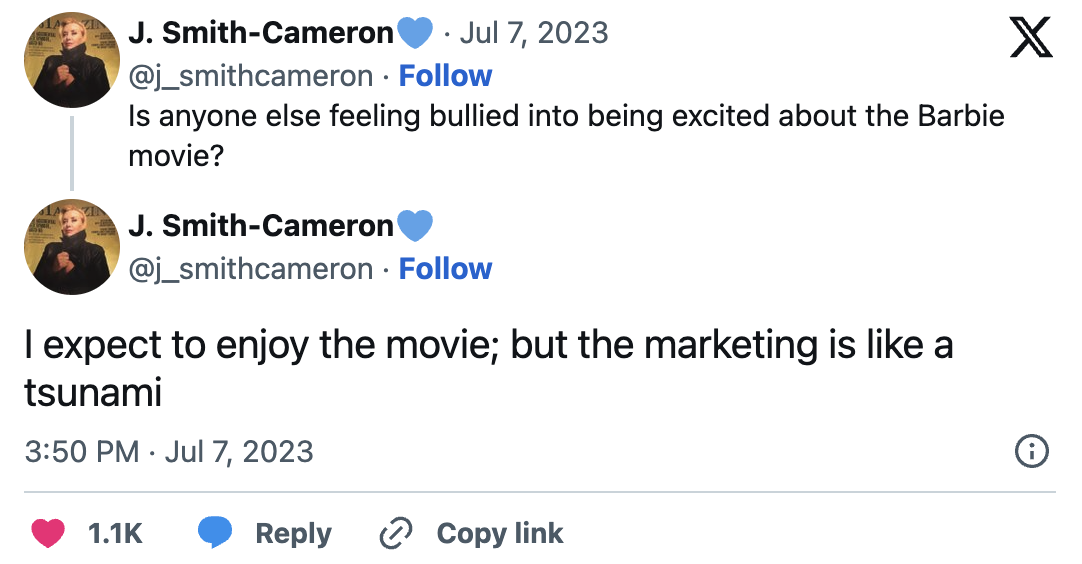
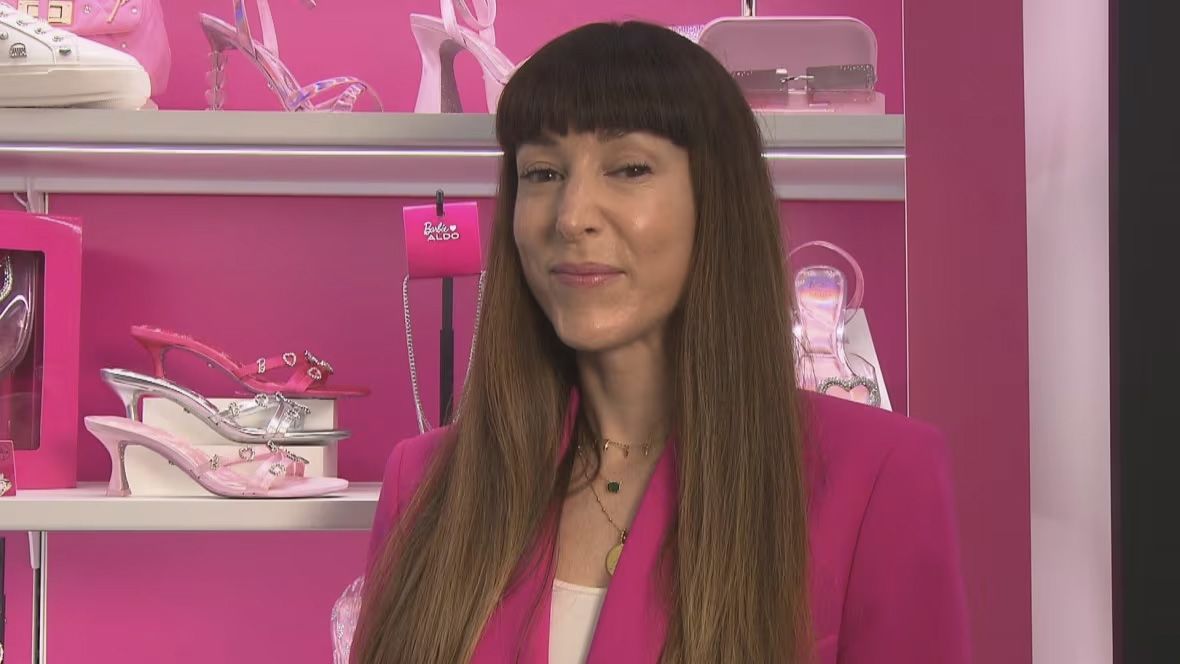
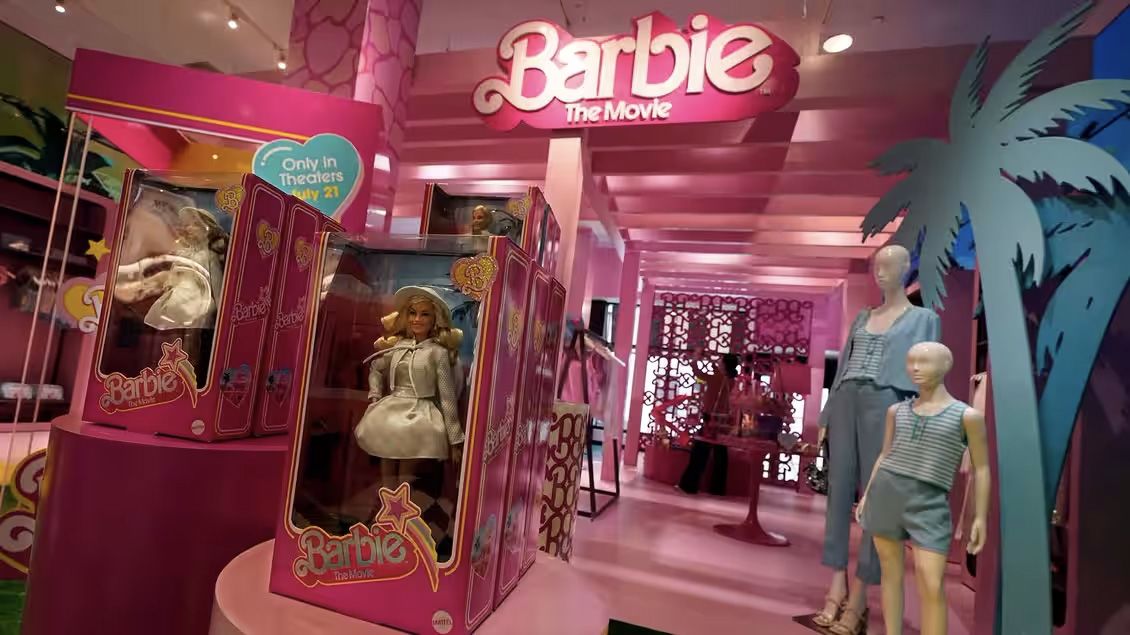

Lessons learned from the "Barbie" movie
There are some lessons that could be learned from this big global blockbuster film (Miller, 2023; Morrison, 2023):
1. Cultivating a brand identifier: Barbie Pink is a brand identifier. Its promotion included pink billboards, pink outfits, and the pink carpet.
2. Prioritizing brand partnerships: With more than 100 product/service collaborations, the audience can become familiar with the “Barbie” film.
3. Creating immersive promotional experiences: The “Barbie” film organized events such as vacation stays to themed restaurants, which created memorable promotion strategies.
4. Cross-platform promotion: Mattel maximized the impact of its marketing efforts by adopting cross-platform promotion and integrating campaigns across various channels (i.e., social media, TV, print, and online advertising) with the purpose of reaching a wider audience and reinforcing brand message.
5. Collaboration with influencers and partners: Mattel’s collaboration with influencers, celebrities, and other partners increased the movie’s reach, buzz, and hype. Businesses should always explore partnerships with influencers and other brands to extend their visibility and aggregate new audiences.
6. Merchandising strategy: Building a comprehensive strategy that goes beyond the film is the key. Brands need to capitalize their campaign investment by offering other related products and tie-ins to increase exposure, generate additional revenue streams, and cover for eventual fiasco of box office.
7. Emphasis on female leadership and power: The “Barbie” movie emphasized the impact of female empowerment, including the fact the its director was a woman. Businesses can focus on gender diversity and empowerment, which shows commitment to inclusivity and equality.
8. Storytelling: The film’s success was driven by compelling storytelling that resonated with the audience. Prioritizing storytelling in campaigns by creating narratives that connect emotionally with the audience can bring positive results to the brand
9. Measurement and analysis: Mattel’s campaign involved monitoring and analysis of marketing efforts invested. Data analysis and performance tracking to measure and evaluate the campaign results is relevant for any industry.
10. Understanding the power of brand nostalgia: Mattel used the nostalgia strategy associated with the iconic Barbie brand, resonating not only with children, but also with adults who grew up with the doll. The company explored the nostalgia that the brand’s heritage evoked in terms of emotional connections with previous/past target audience.
11. Inclusivity and diversity: The film emphasized topics of empowerment and inclusivity, promoting diverse representations of characters.
12. Previews: The use of previews to create buzz around the “Barbie” movie generated excitement and anticipation. This type of tactic can offer sneak peeks, teasers, and exclusive content to build anticipation and excitement.
13. Audience segmentation: The marketing campaign understood its target audience, recognizing both children and adults as potential consumers, and tailoring effective messages that addressed specific needs and preferences.
14. Improving image and stock performance: The release of the “Barbie” movie in 2023 improved Mattel’s doll brand image, and stock performance. It renewed interest from children in the doll and its accessories, and resonated with adult audiences, increasing Barbie’s brand’s status. Mattel can explore new horizons and ensure survival and success at least temporarily, while developing new strategies for the industry.
15. Mattel’s future strategic decisions: The success of the movie demonstrated that storytelling and engaging narratives were important elements for the company’s product development. For the future, Mattel most likely will replicate the “Barbie” formula and continue prioritizing partnerships with filmmakers, screenwriters, and animators to create other compelling content that goes beyond physical toys.
16. Future of movie marketing: To achieve high-grossing outcomes, future blockbuster releases will likely follow the steps of the “Barbie” movie marketing strategies.
Marketing, advertising, and businesses have evolved over the years from promoting and portraying unhealthy stereotypes about women to empowering positive narratives. The conceptualization of femvertising implemented and adopted by companies creates awareness for the problem.
Further, collaborations with partners who match relevant values help with the success of a brand. Strategies used by the Barbie marketing team were straightforward and helped to lead the Barbie brand and movie to its success (Clara, 2023).
The “Barbie” movie concludes with the realizations that there needs to be more equality between Barbies and Kens, enforcing the need to continue challenging gender roles and how they are portrayed in society. Although the movie presents some flaws and problematic gender roles, it opens the conversation to a mass audience in ways that it does not feel confrontational. It covers issues around the damaging stereotypes of male success and powerful women. According to Proctor (n.d.), the film is not about empowered women or disempowered men. It is about Barbie and Ken, given that feminism has never been about women being superior. It is about both genders exploring their identities and potential together. As a criticism of the current culture, the film triggers and encourage conversations around the topic. The main consequences of gender inequality lie on the reinforcement of the influence on mental health, stereotypes, patriarchy, and the challenges that people face regarding their own gender identities outside of the binary reference.
